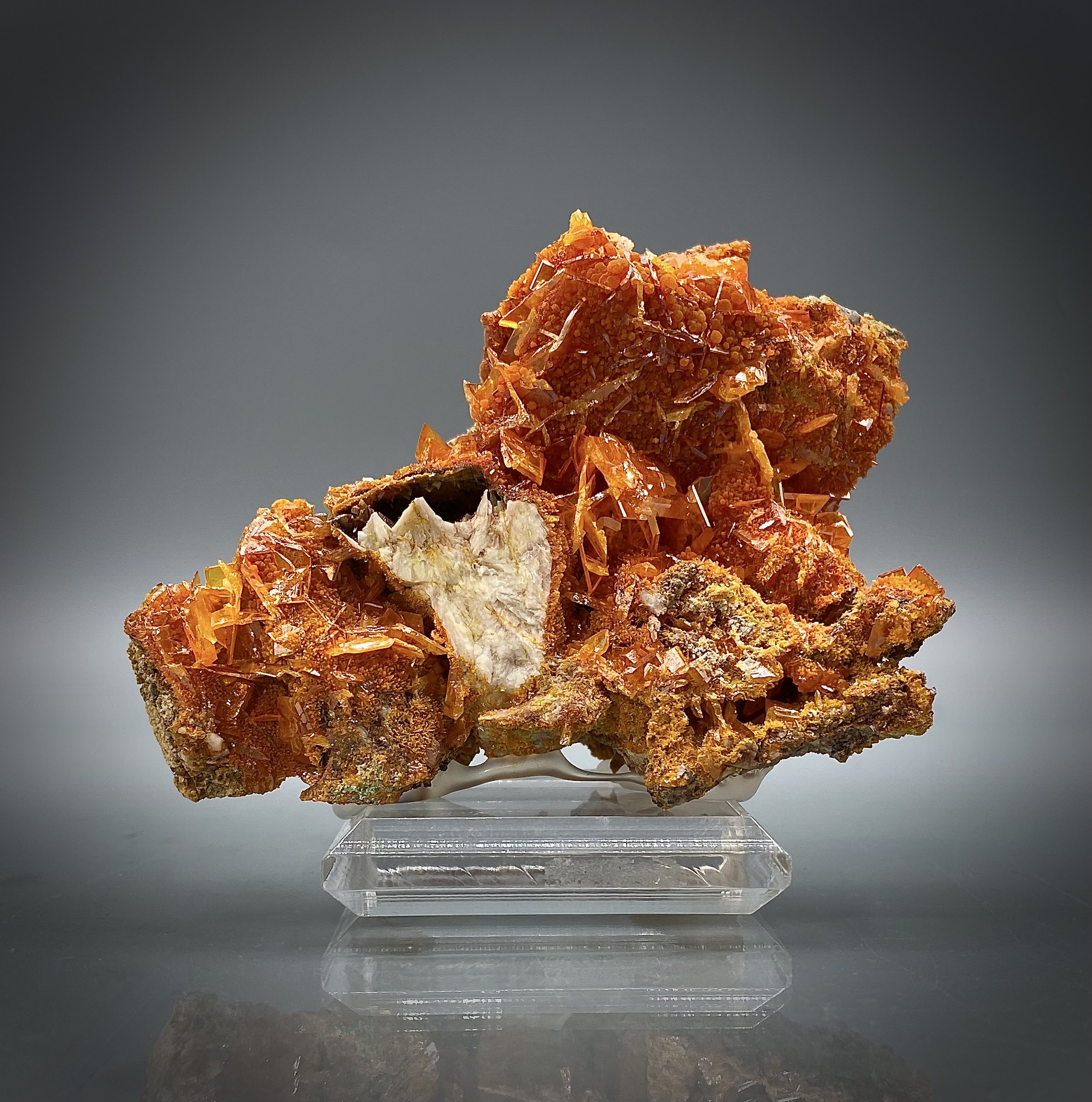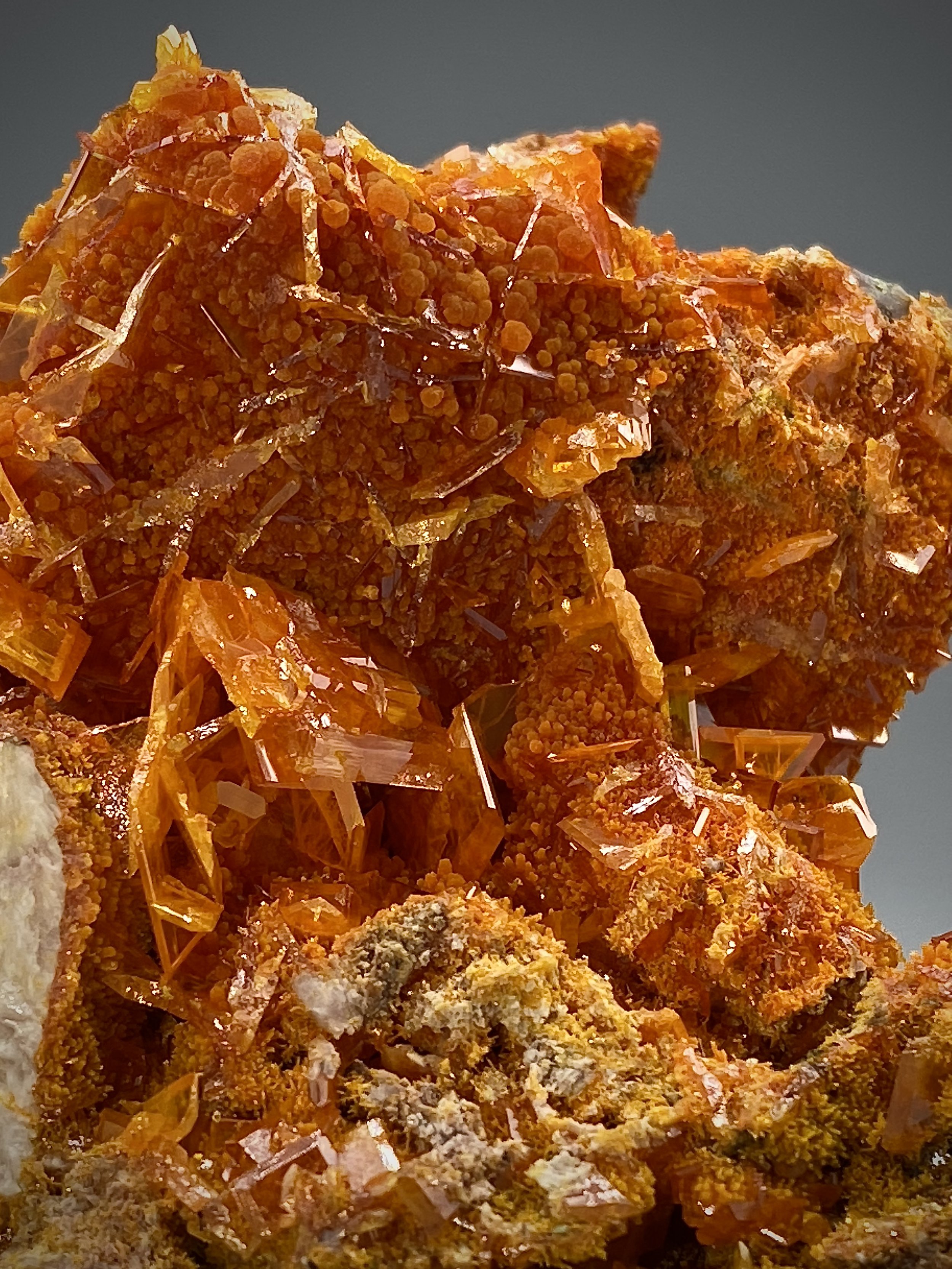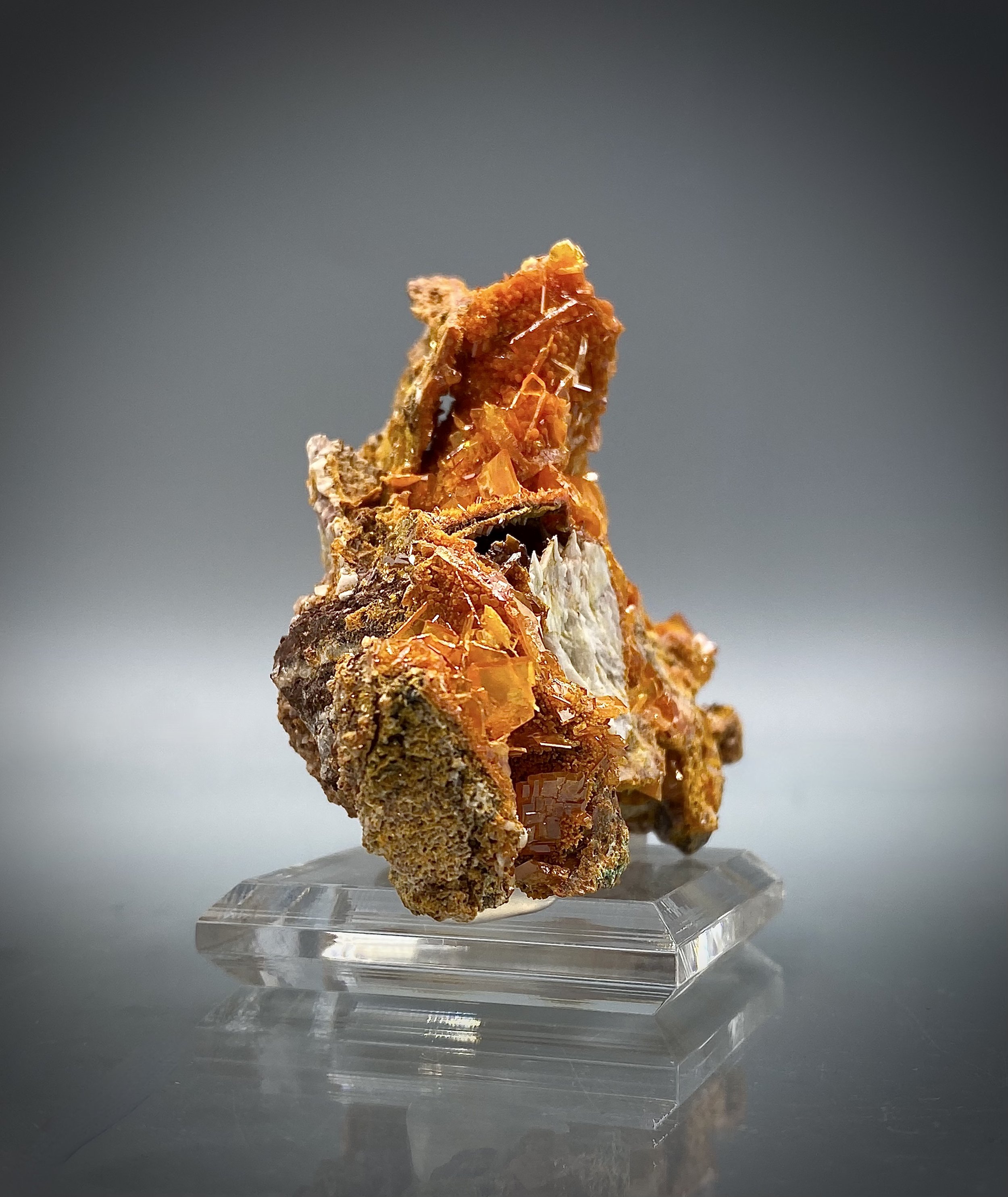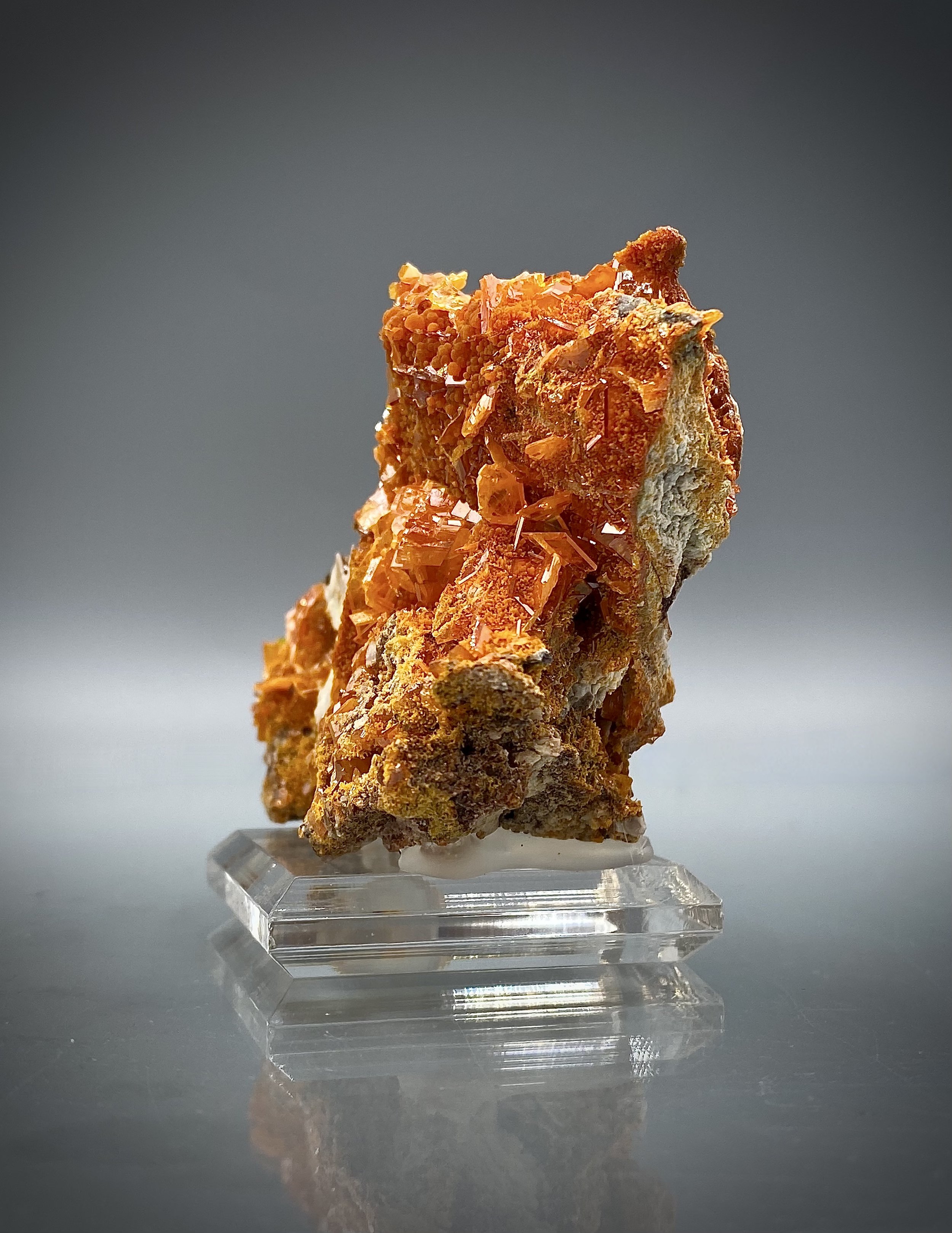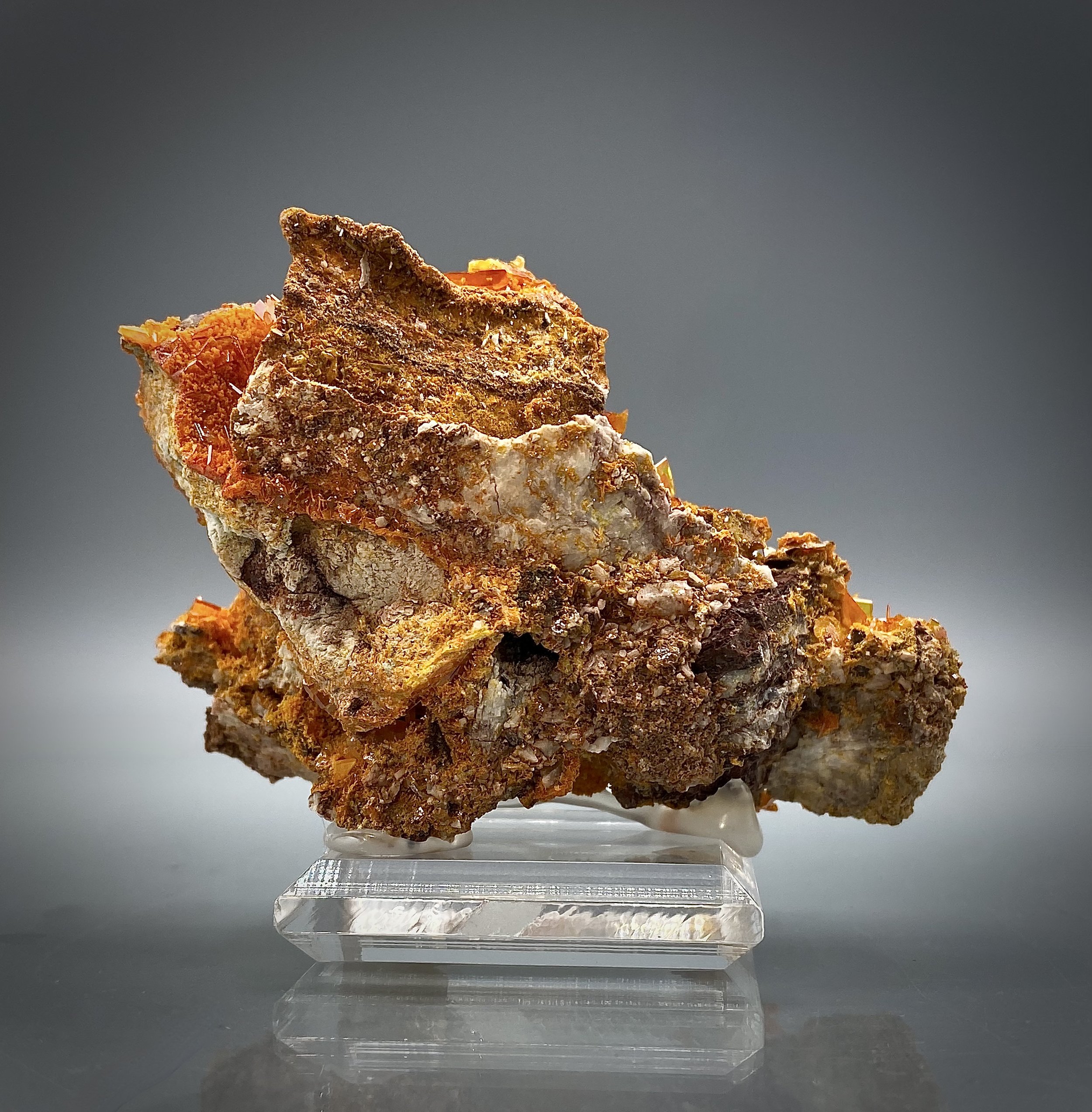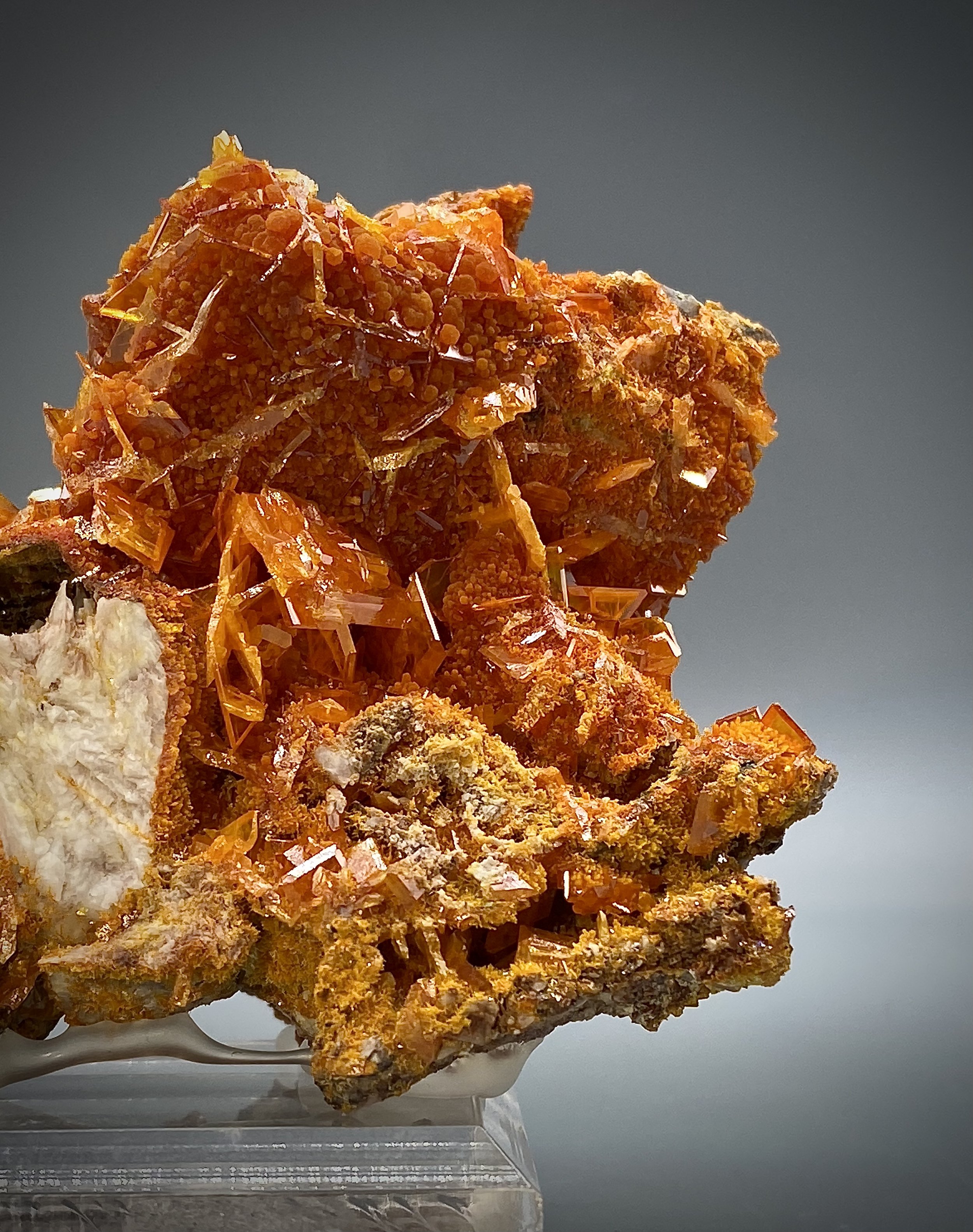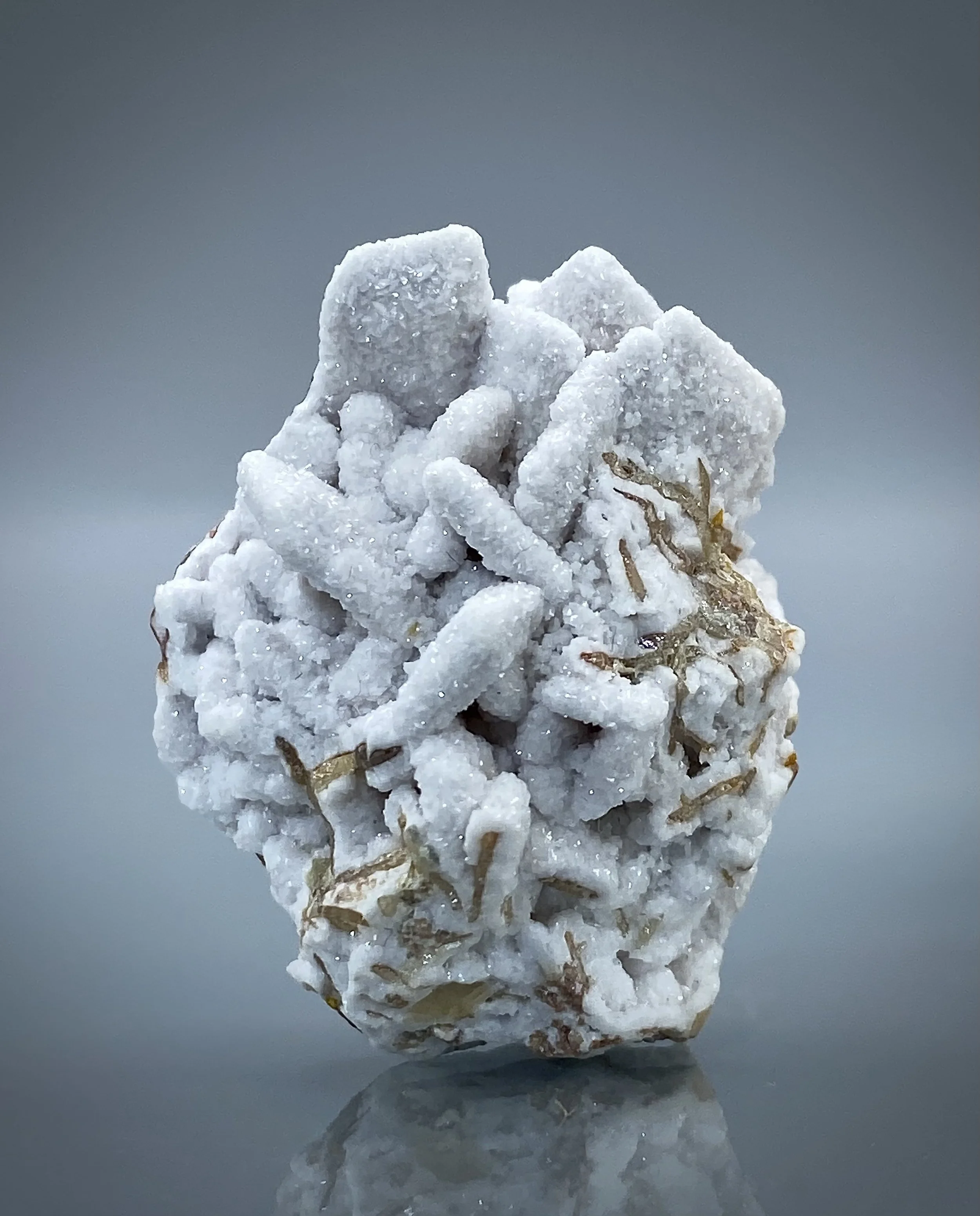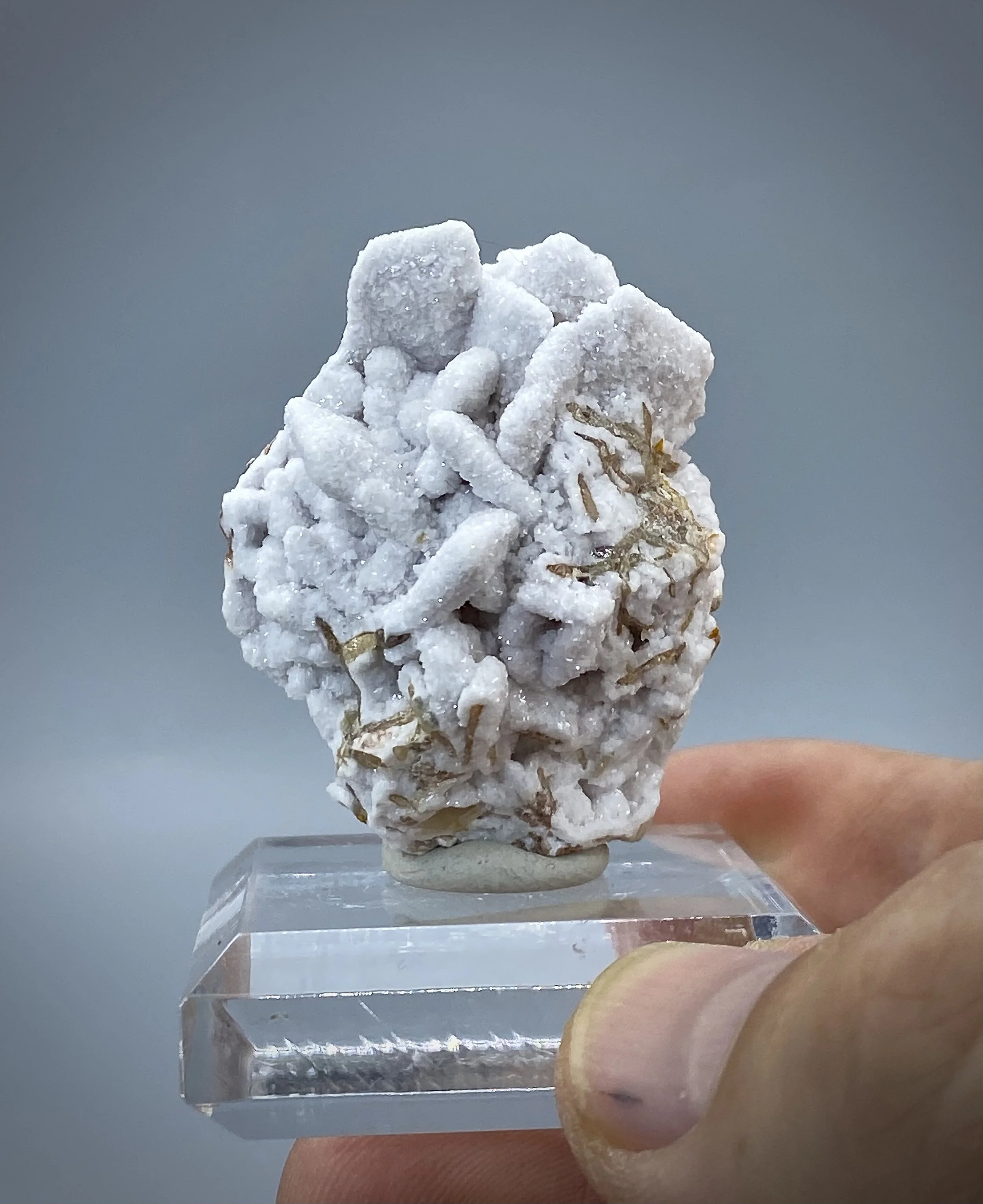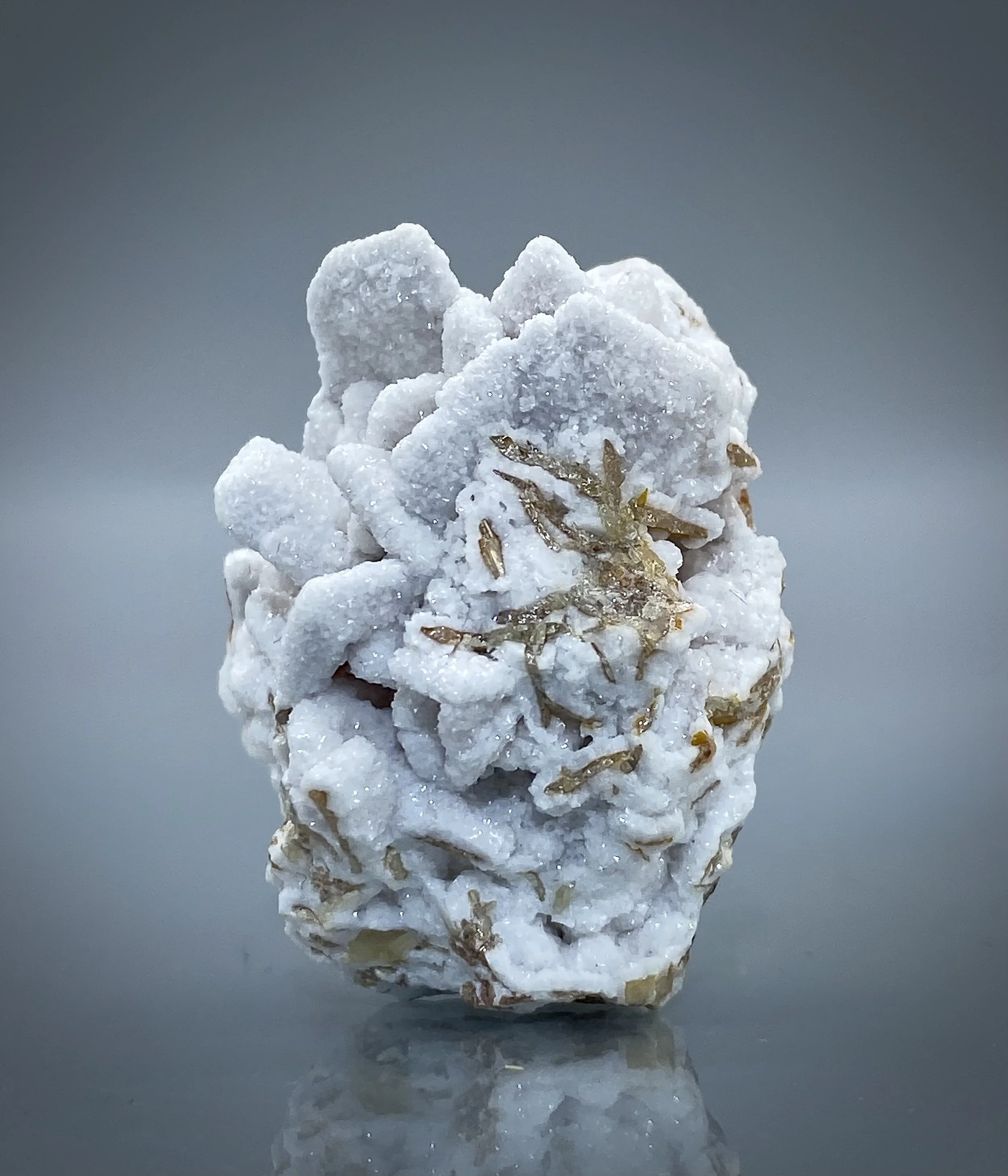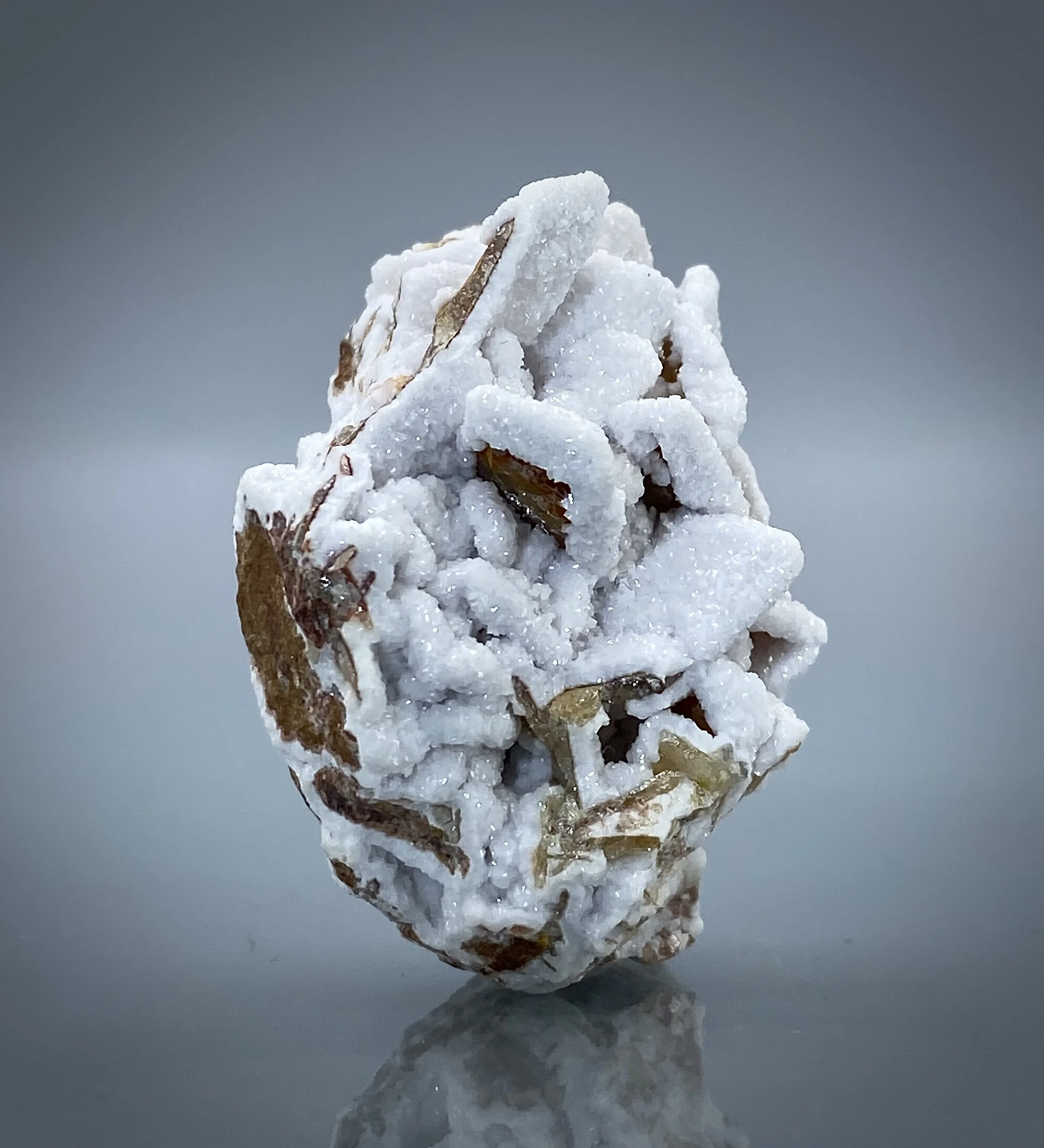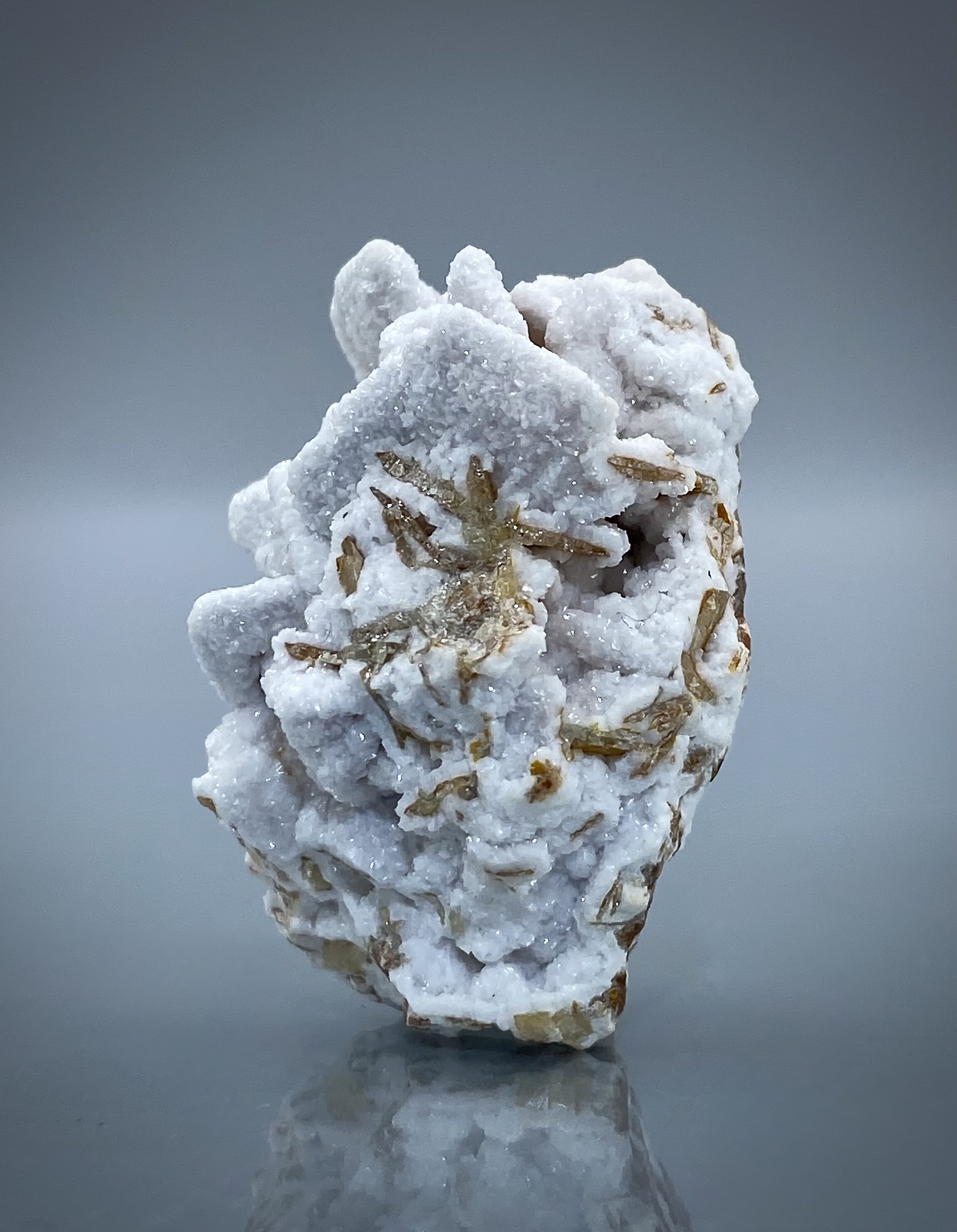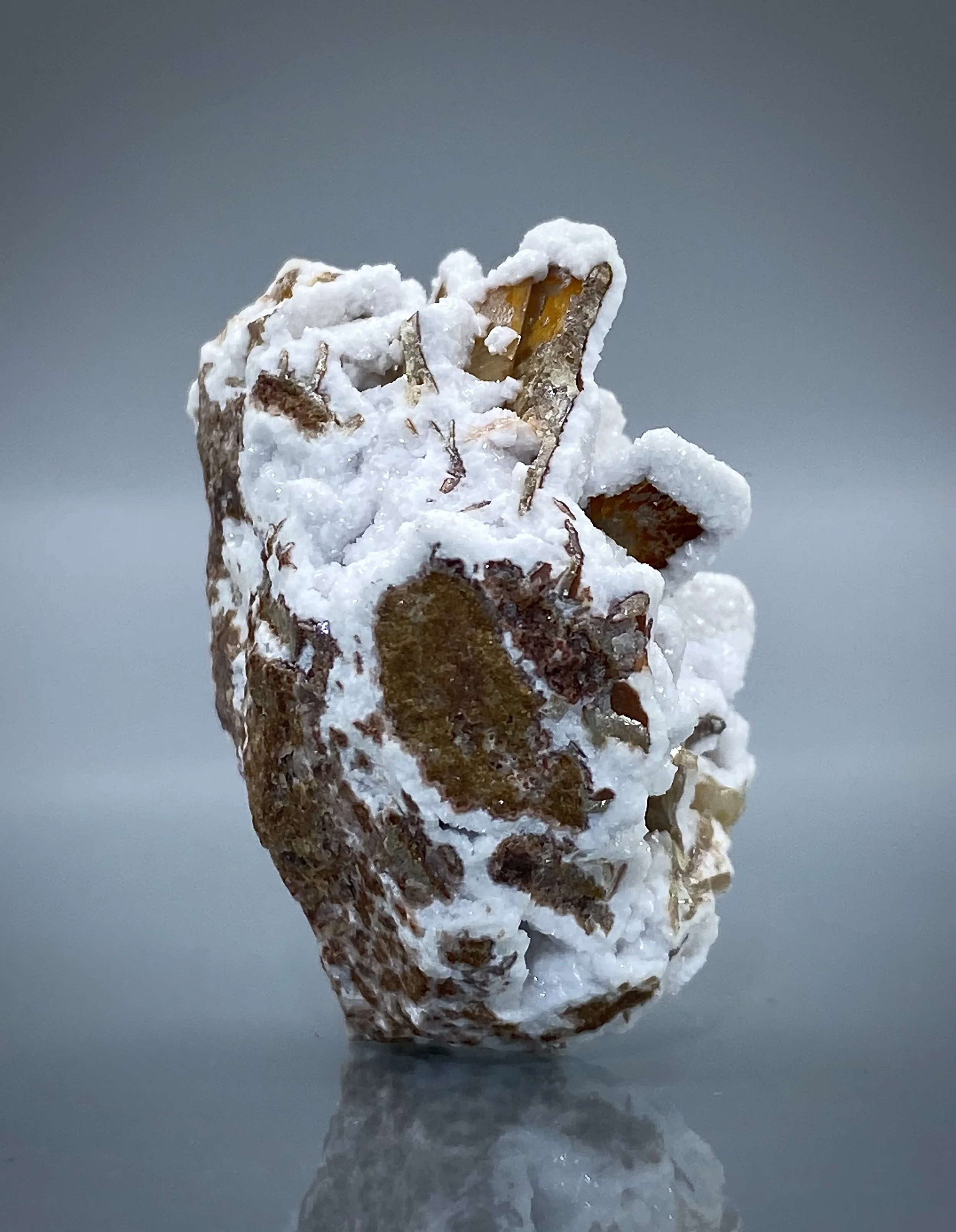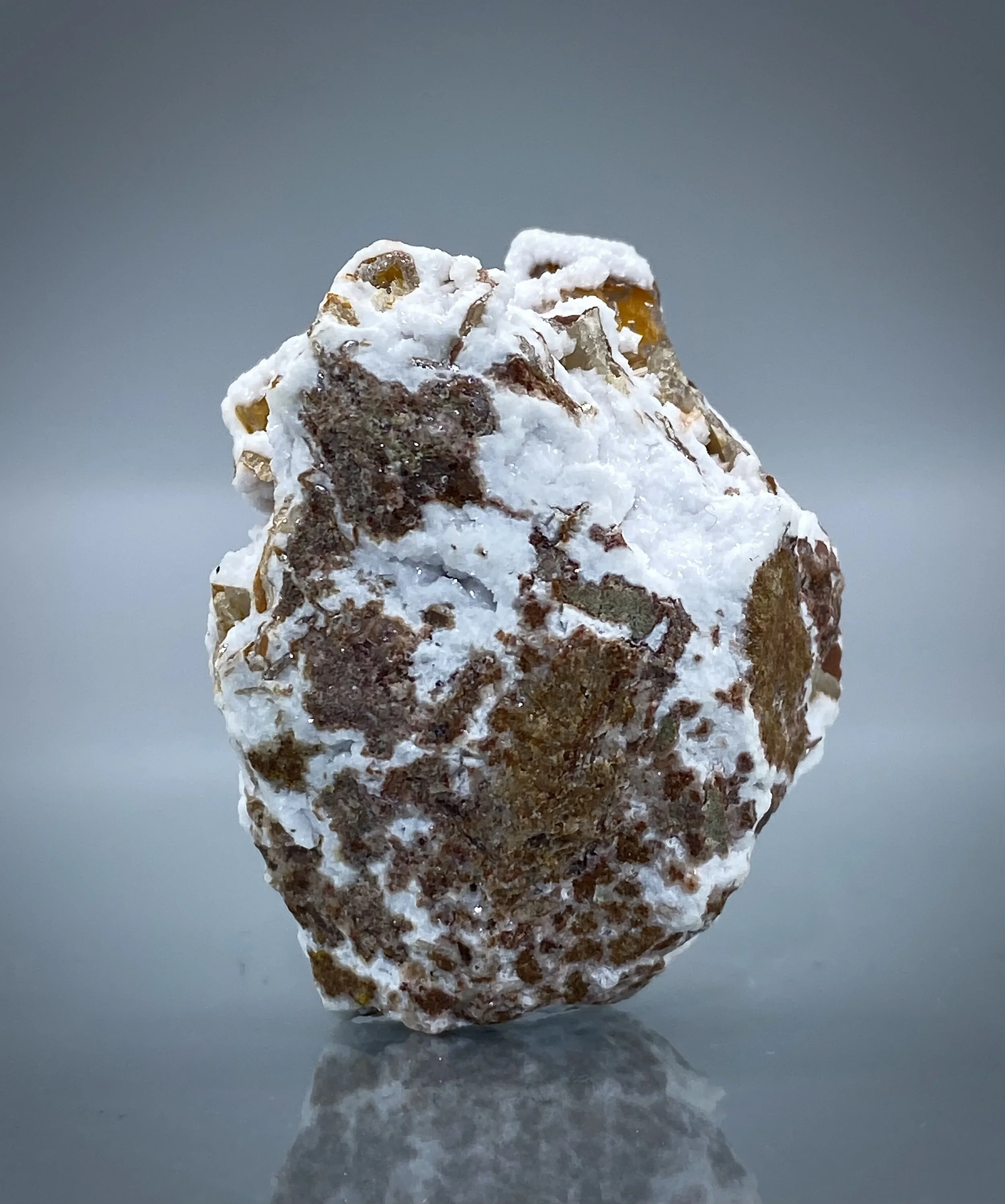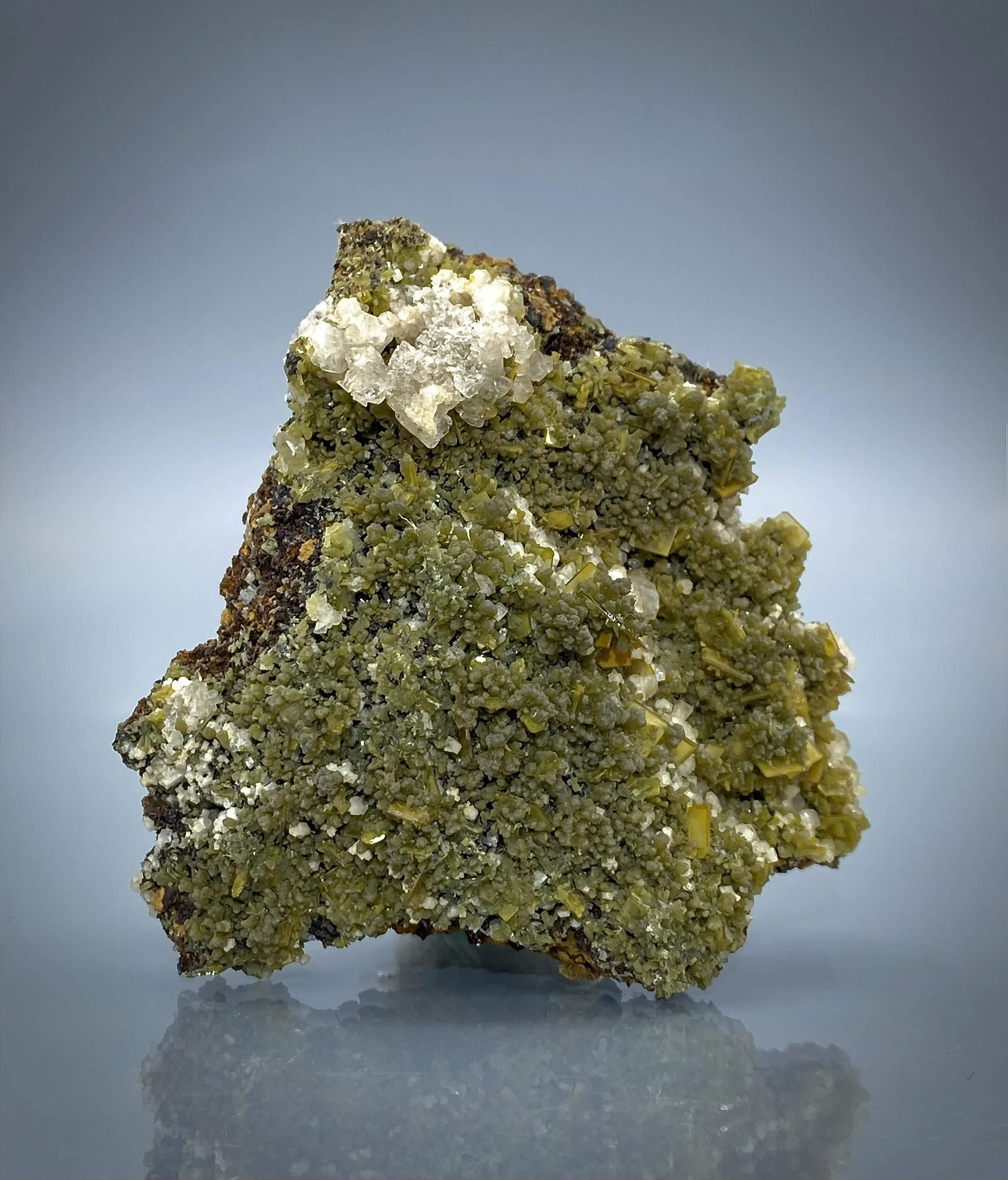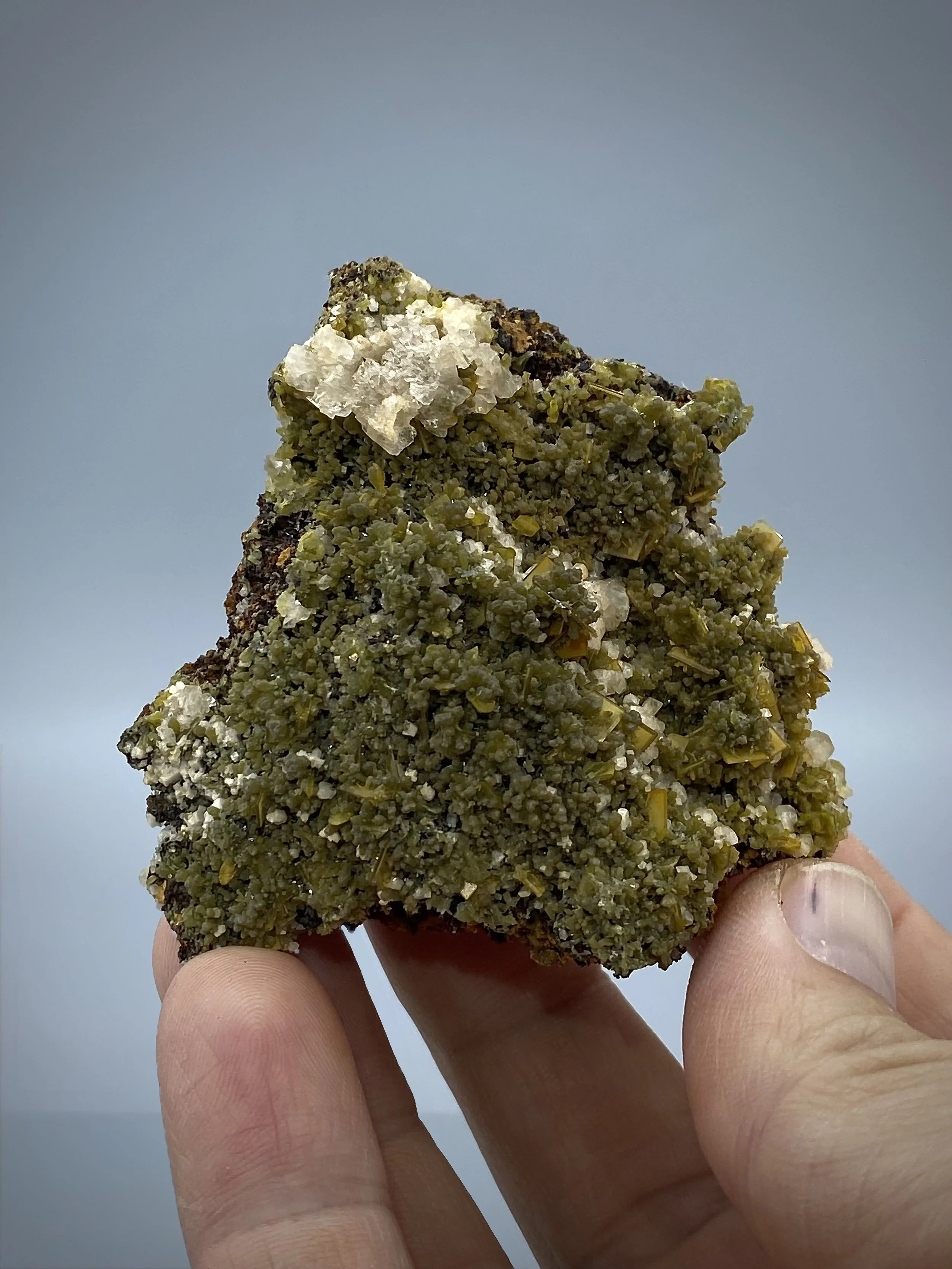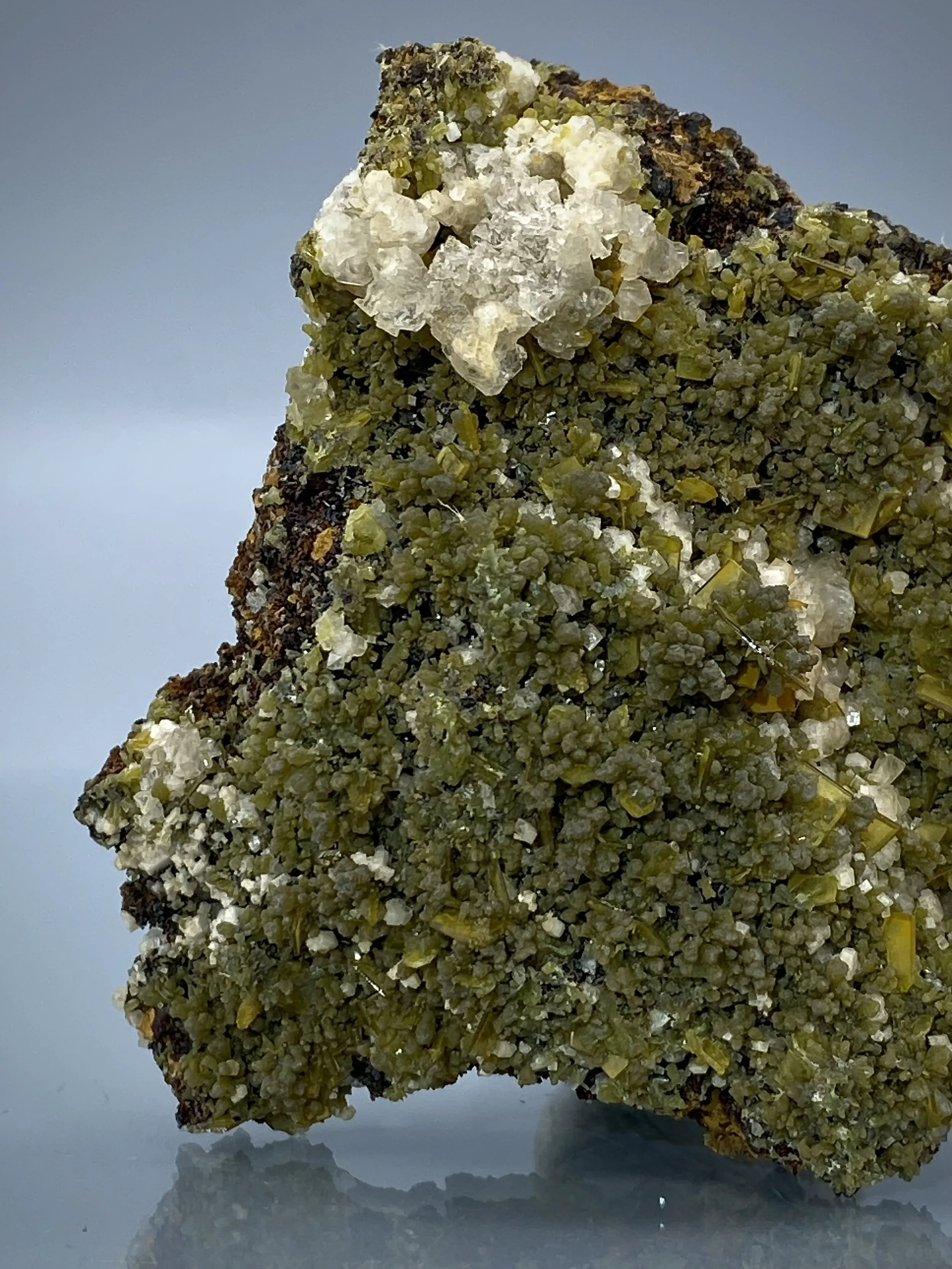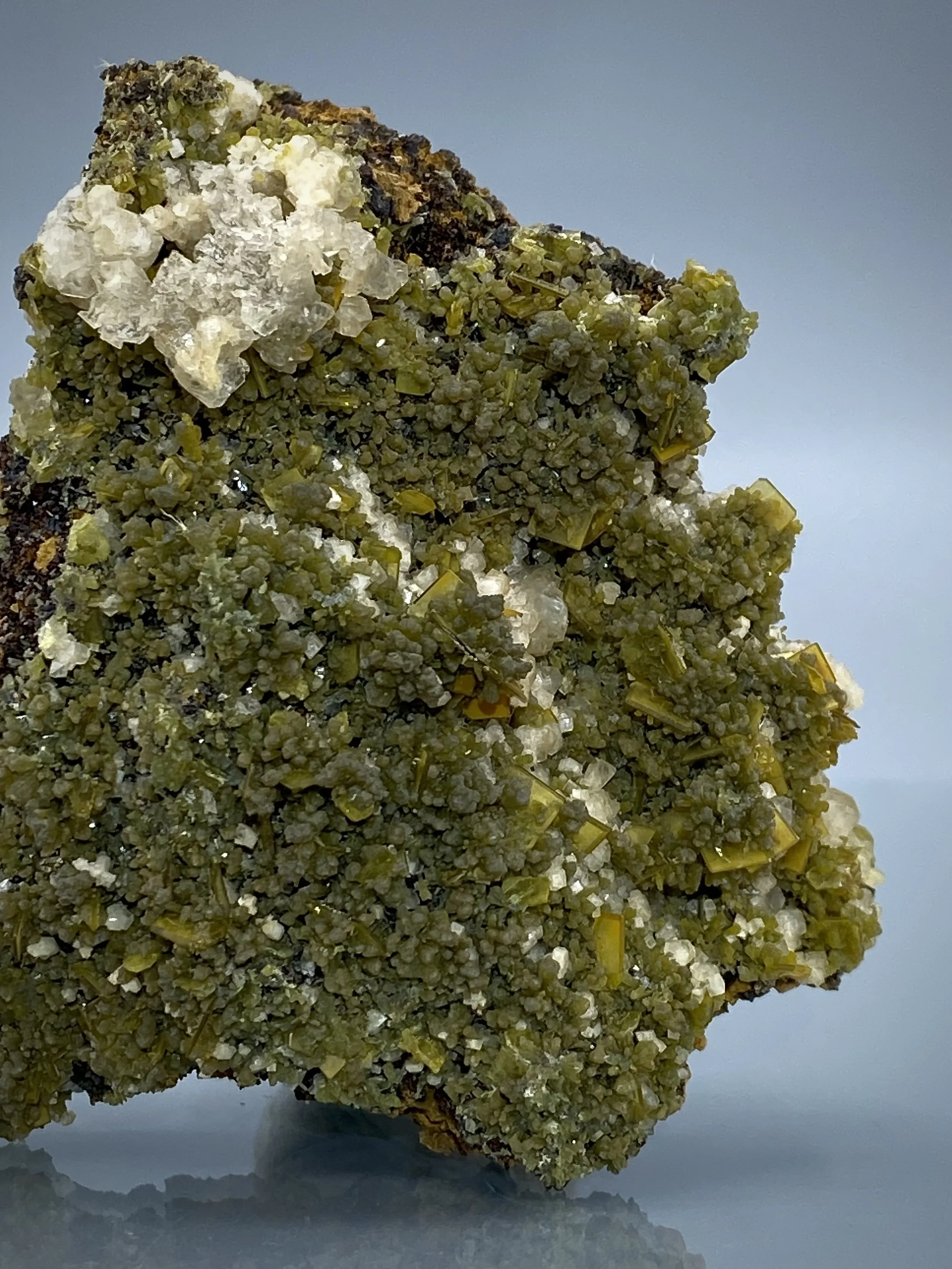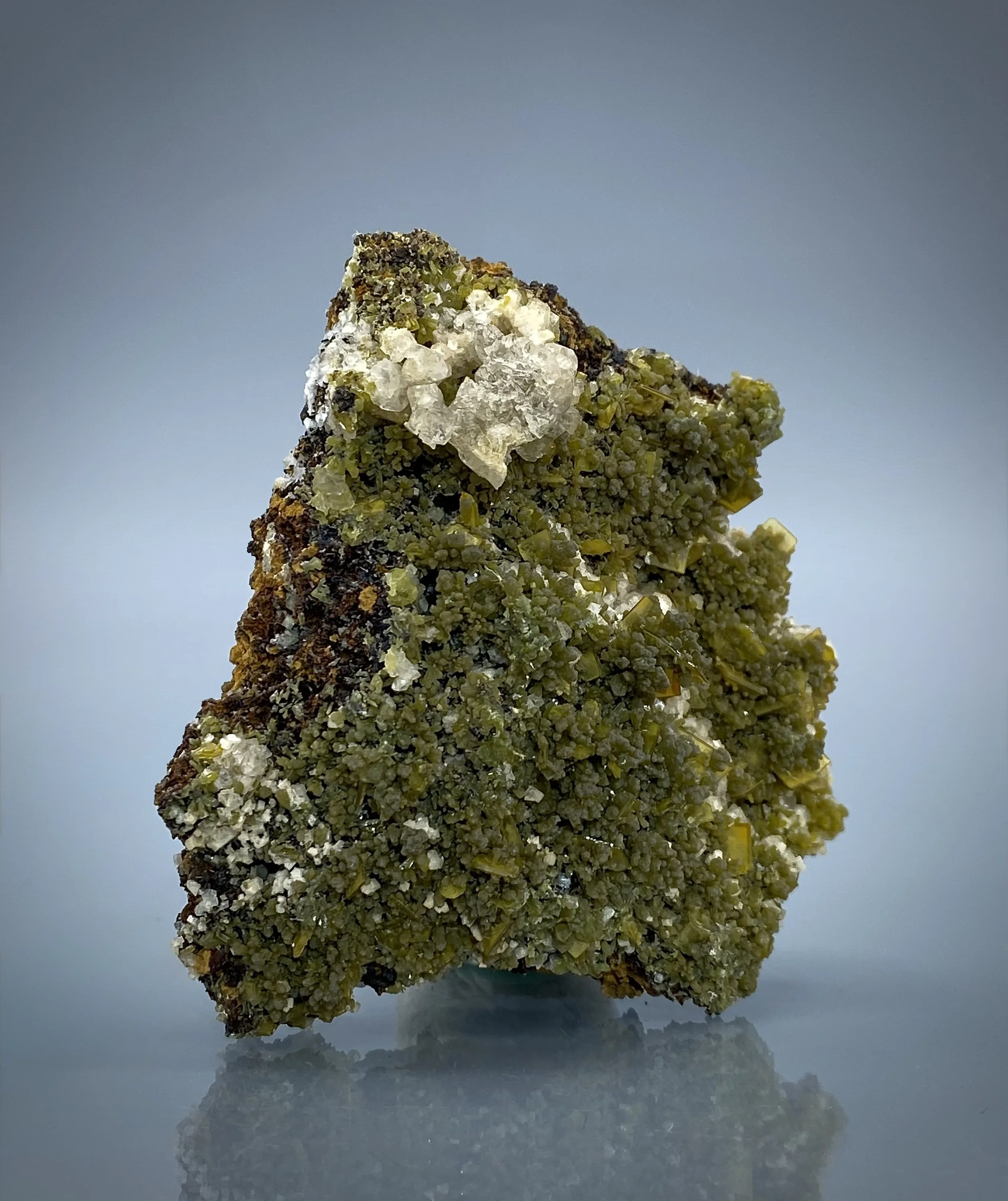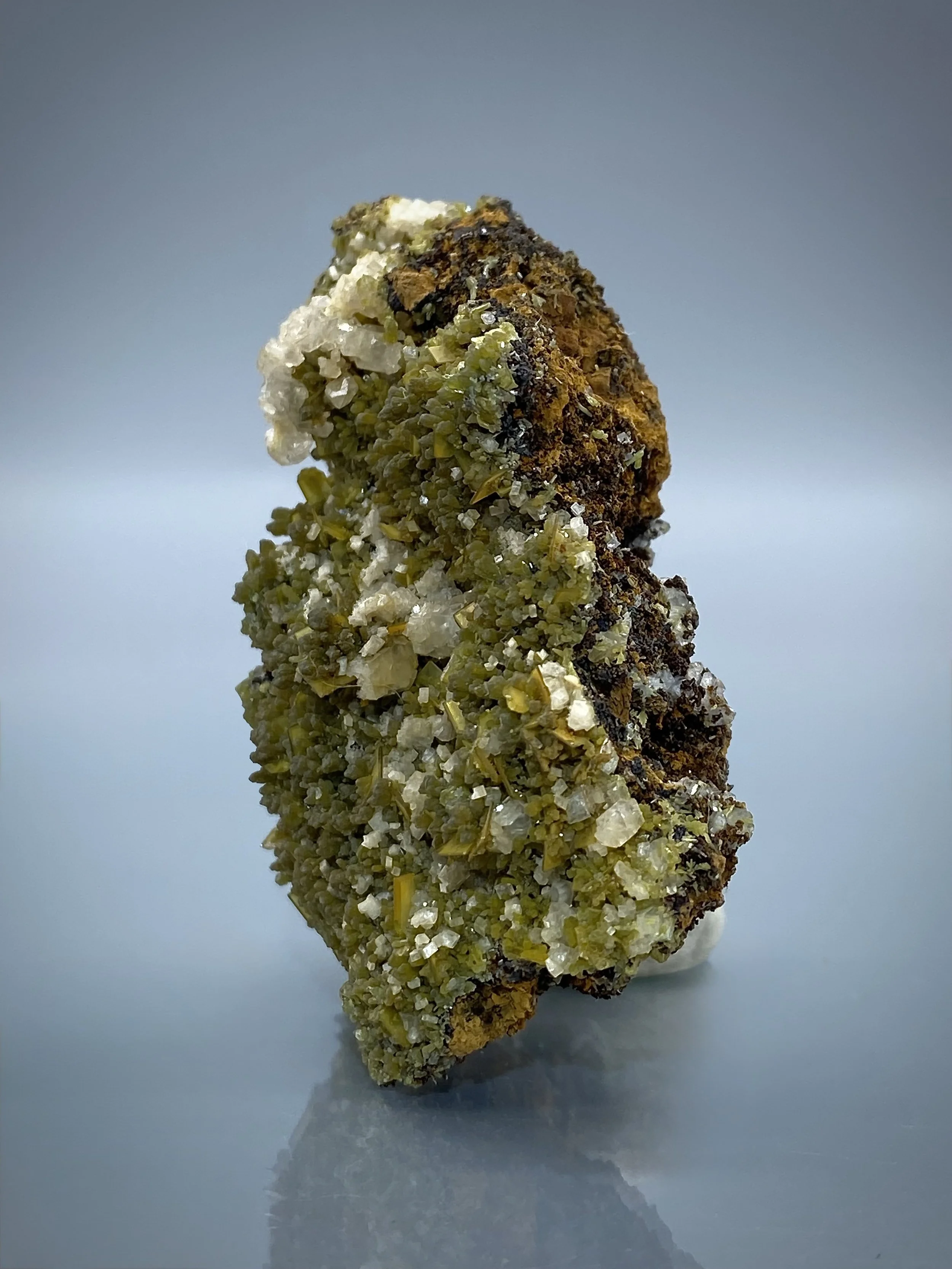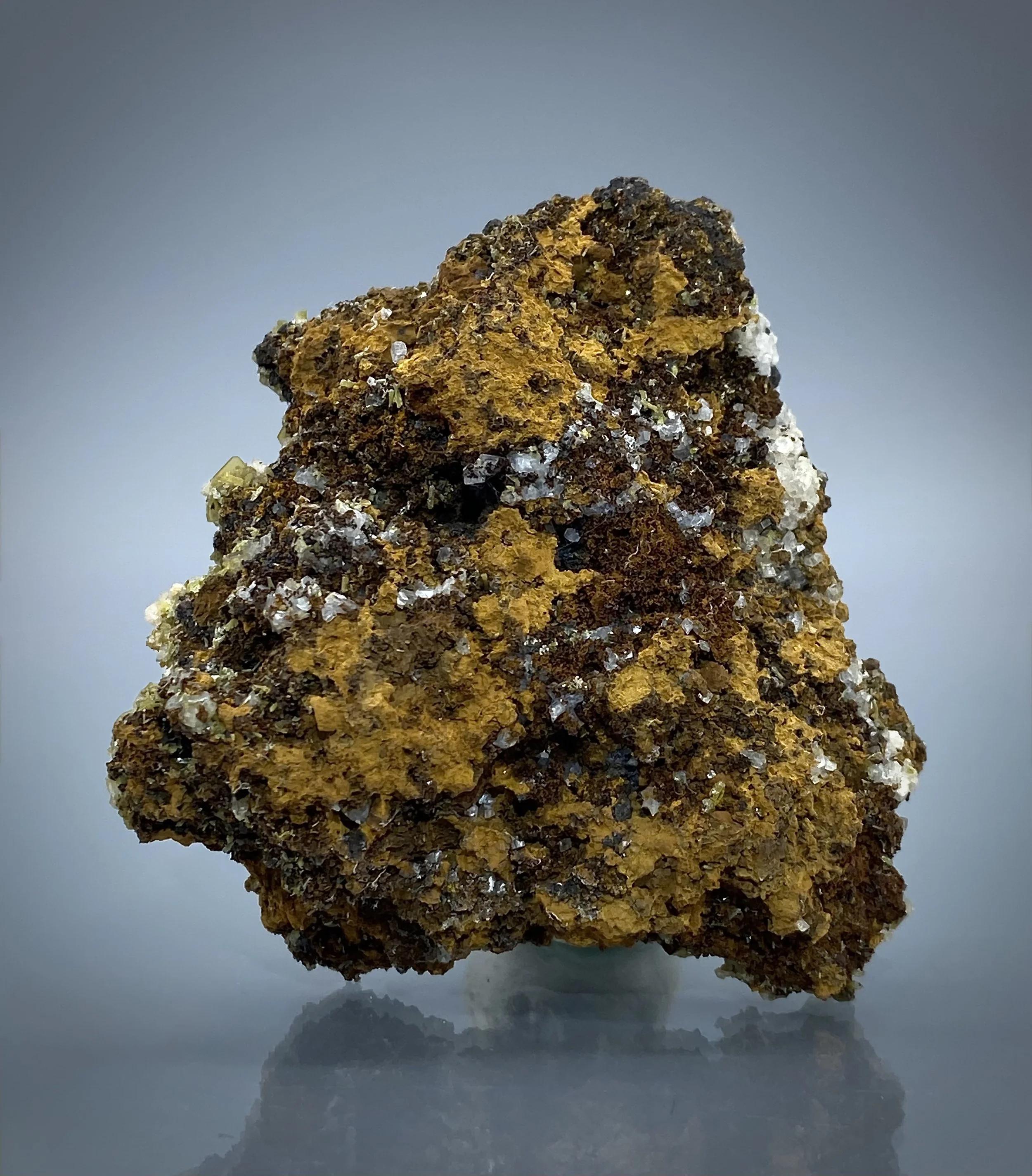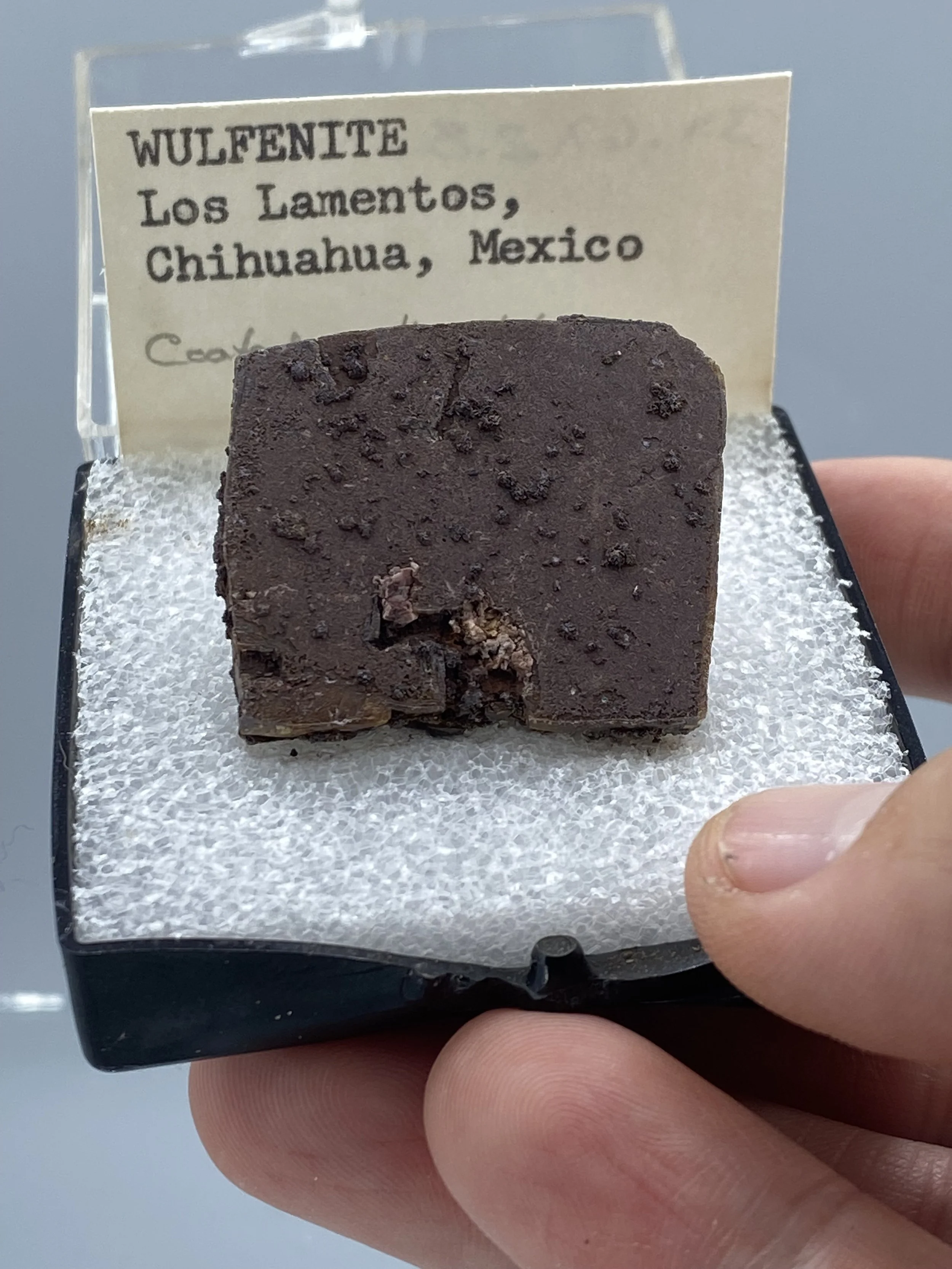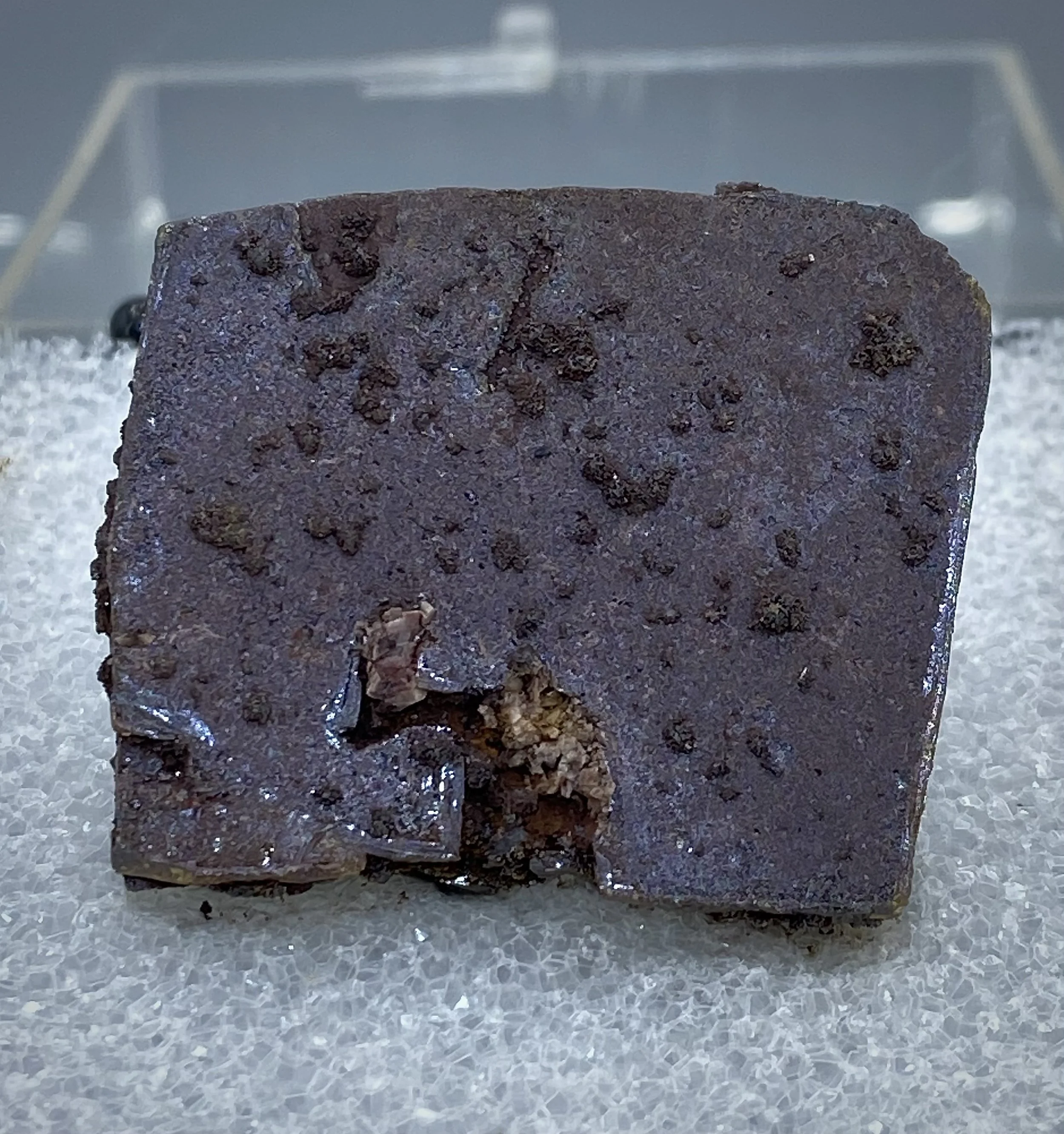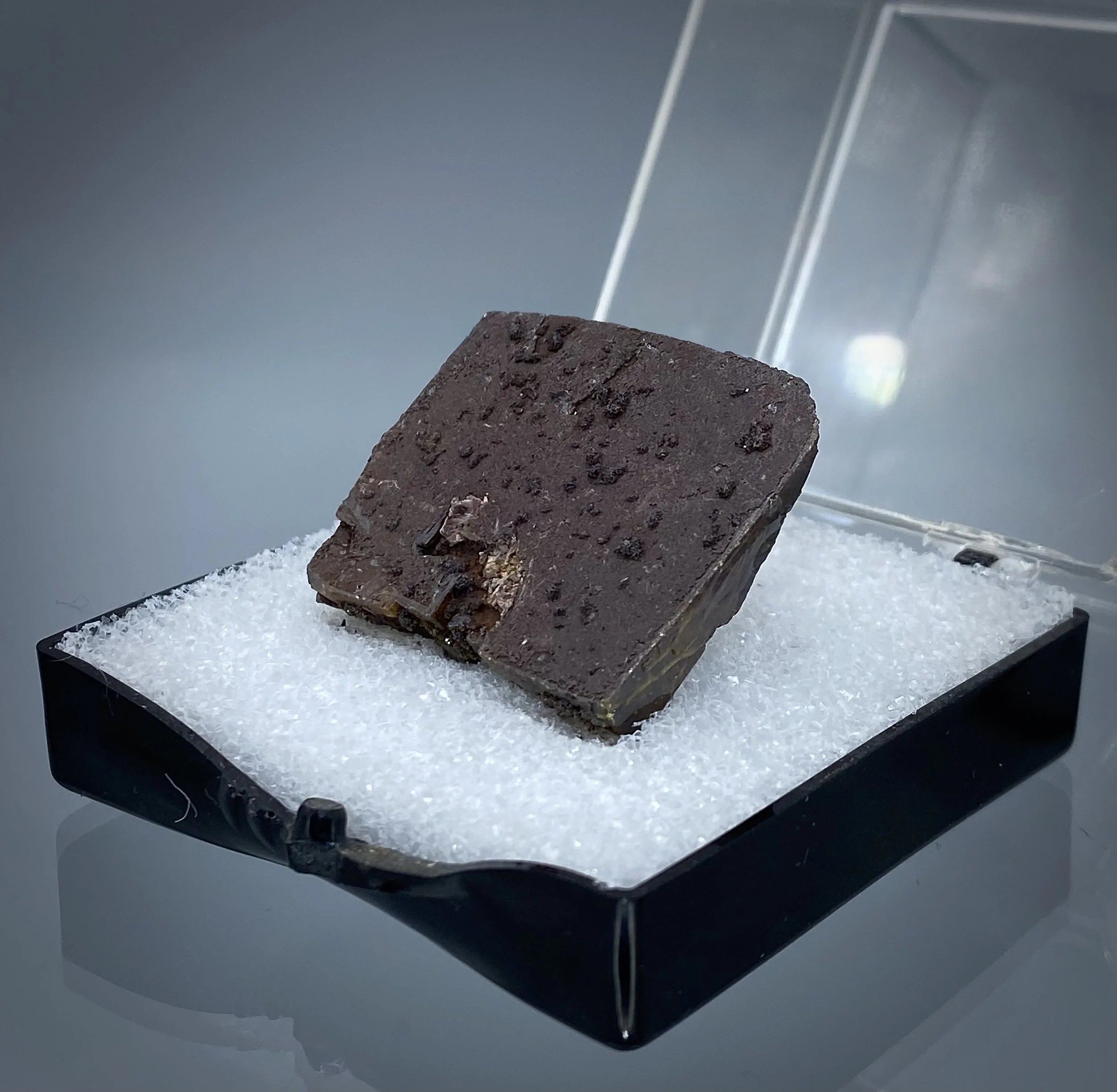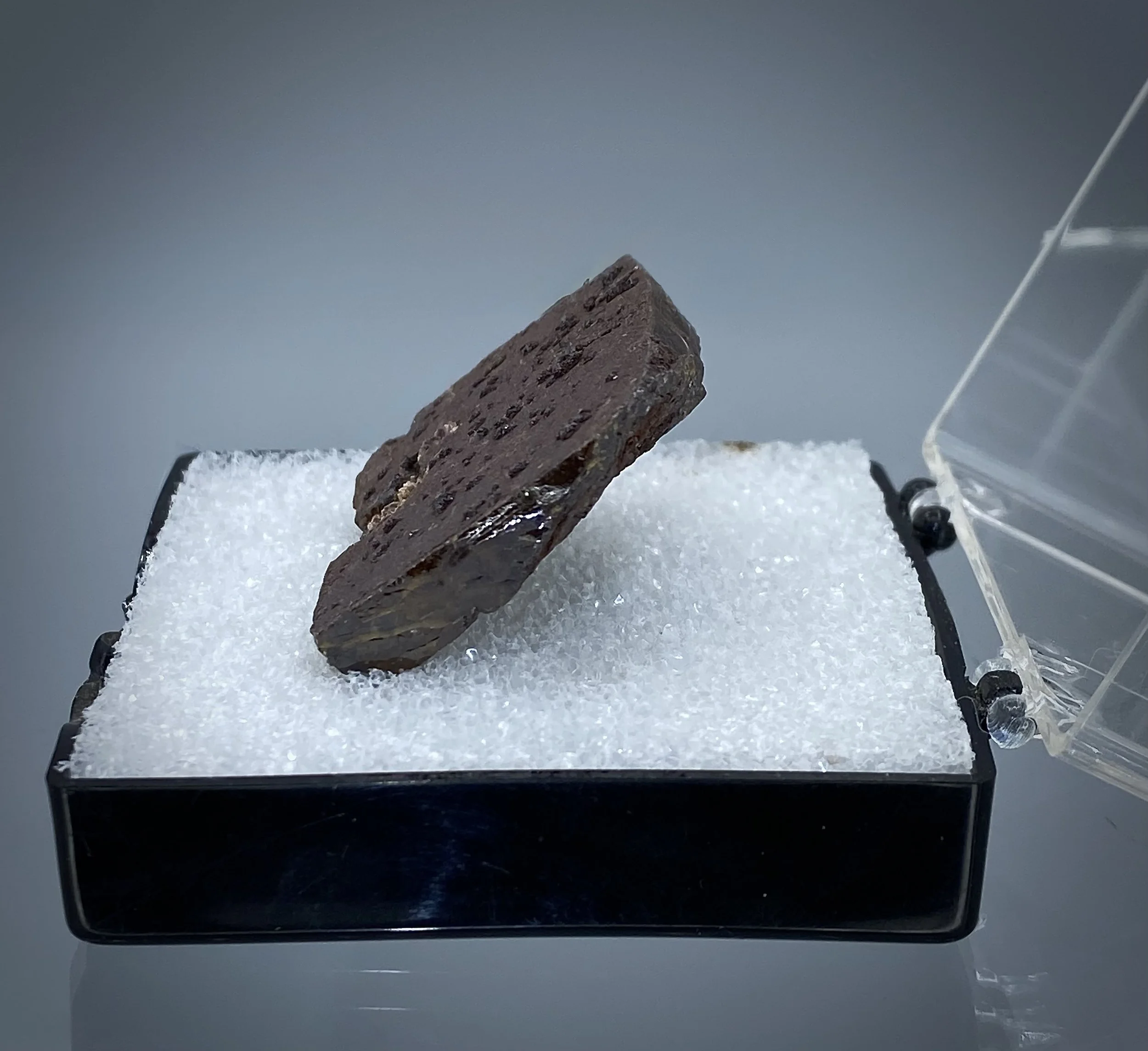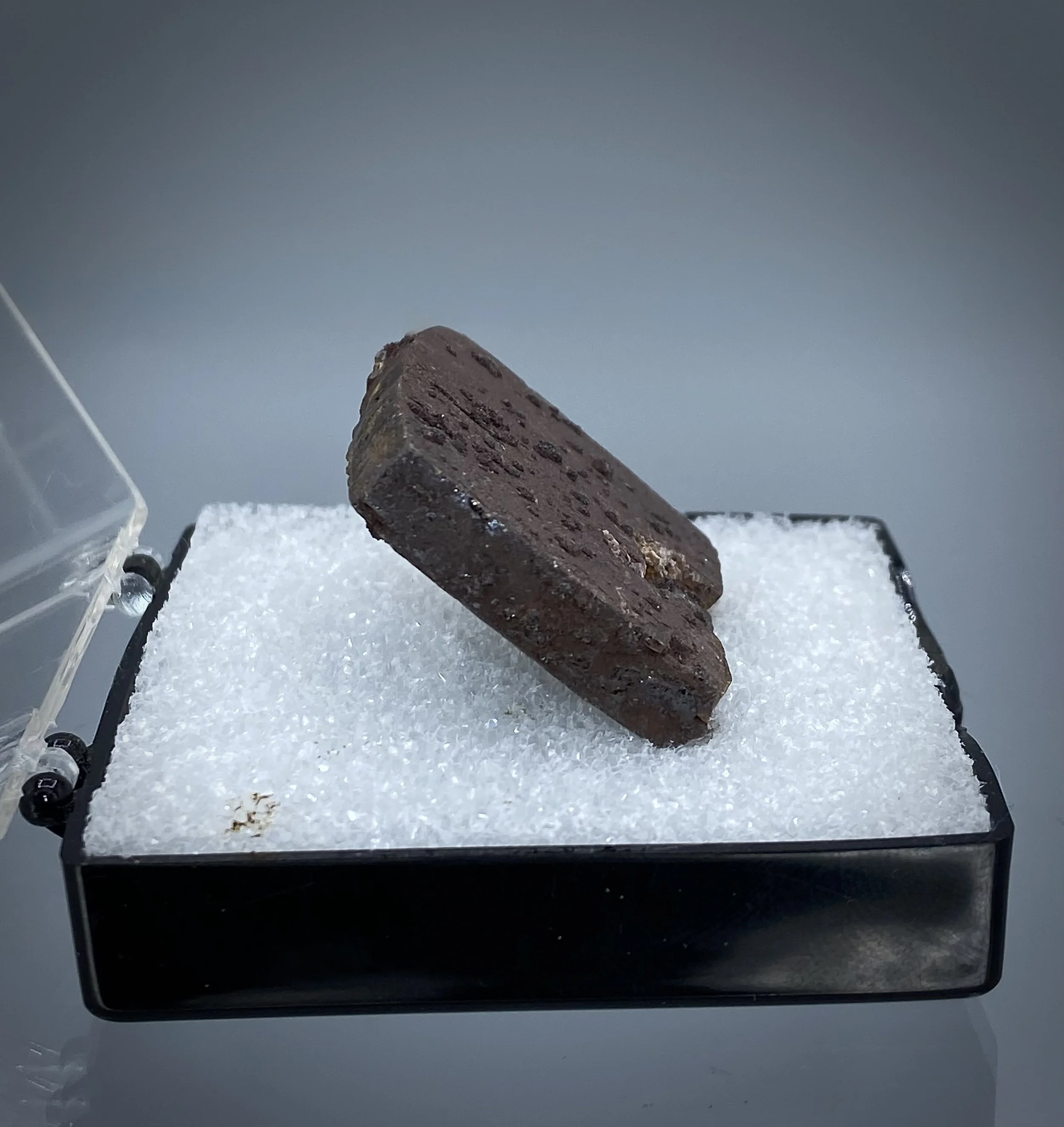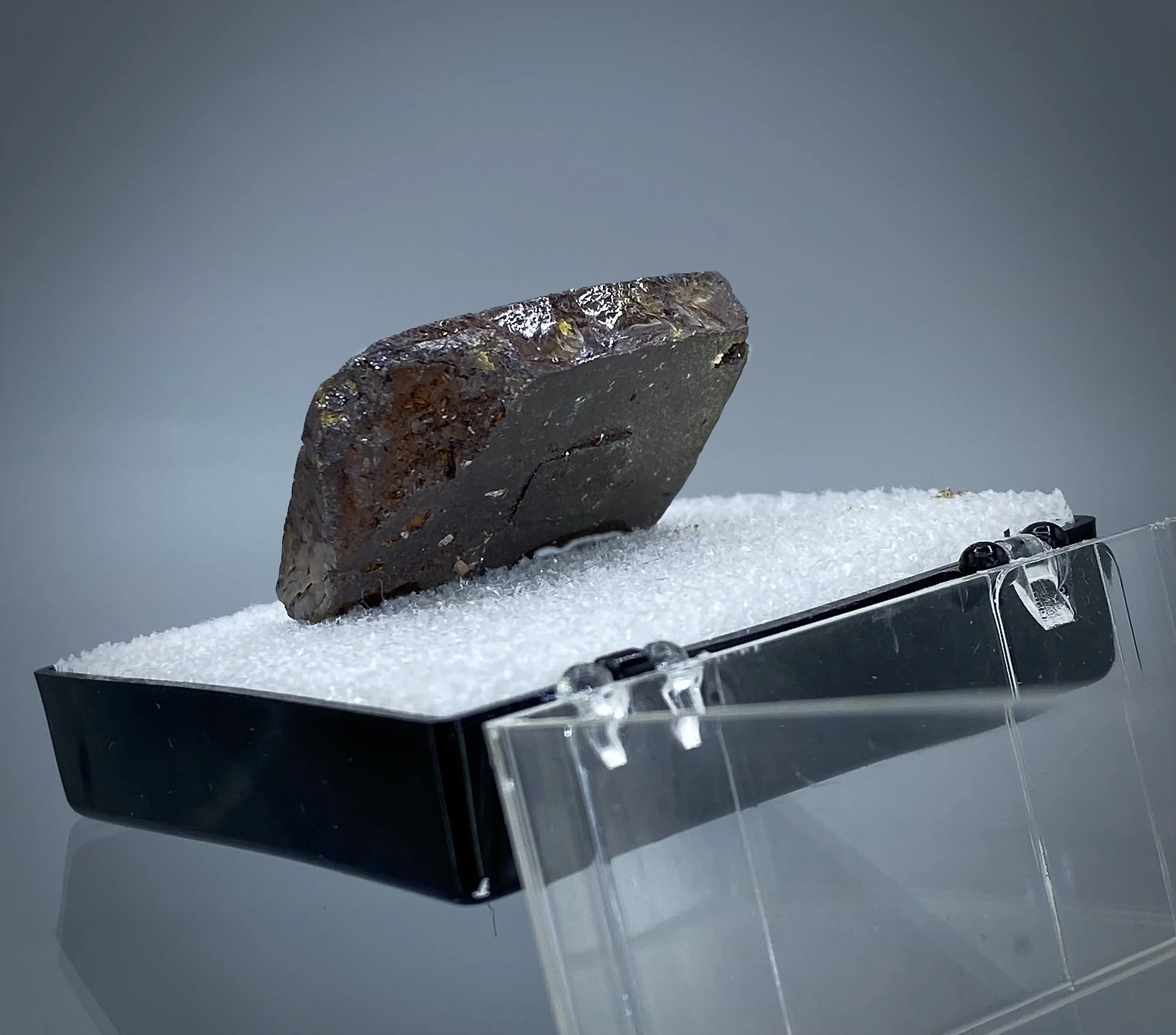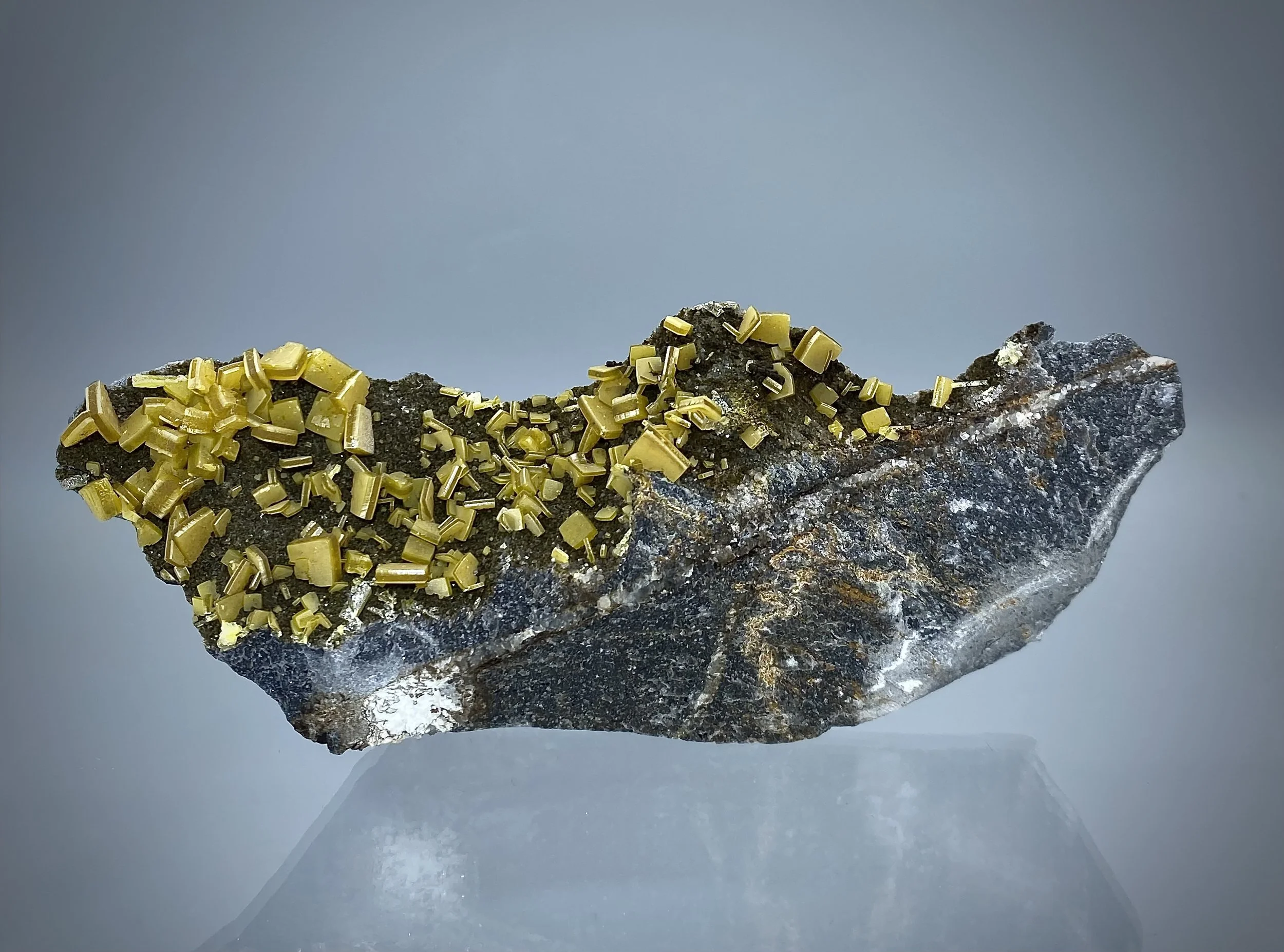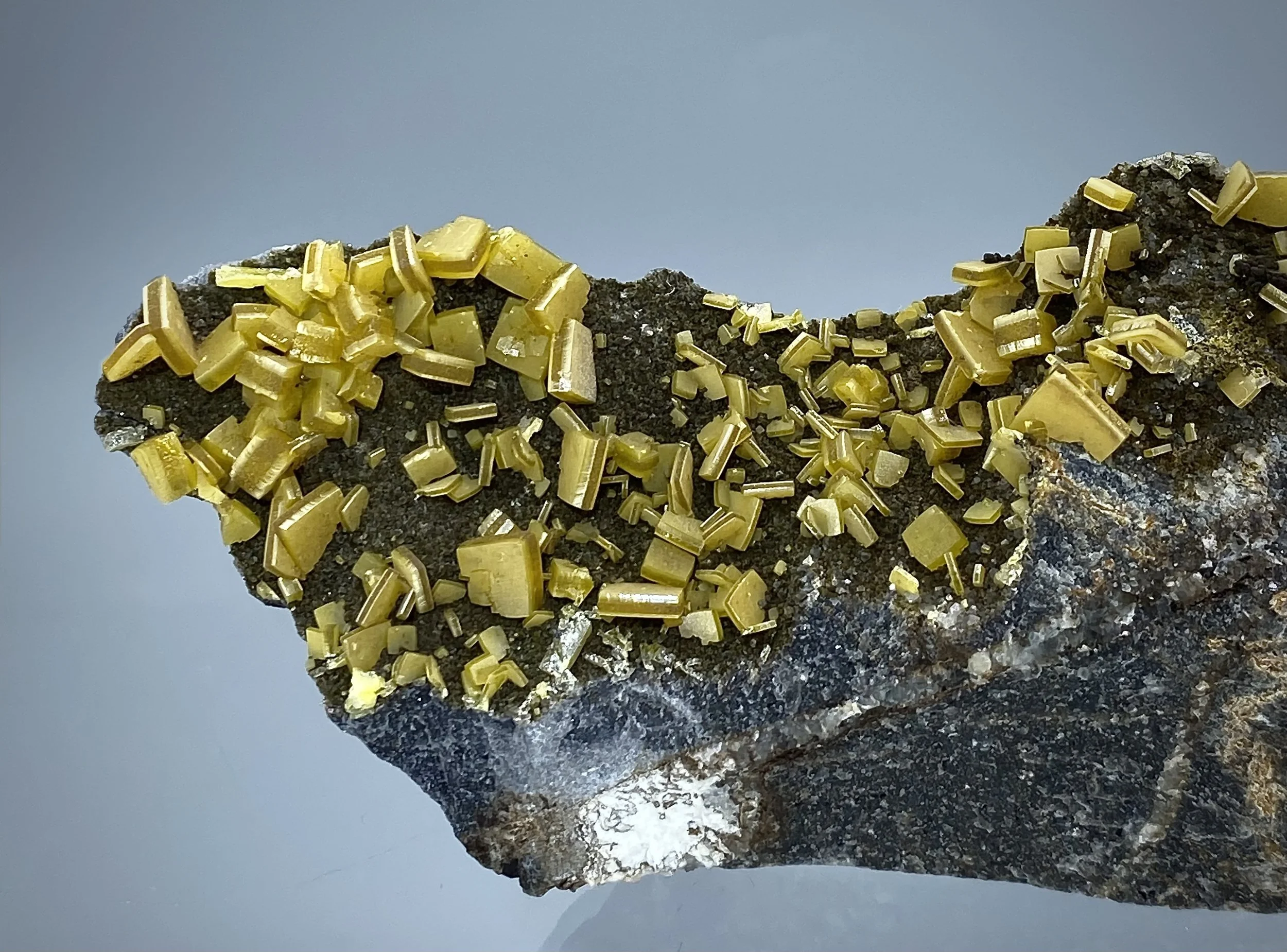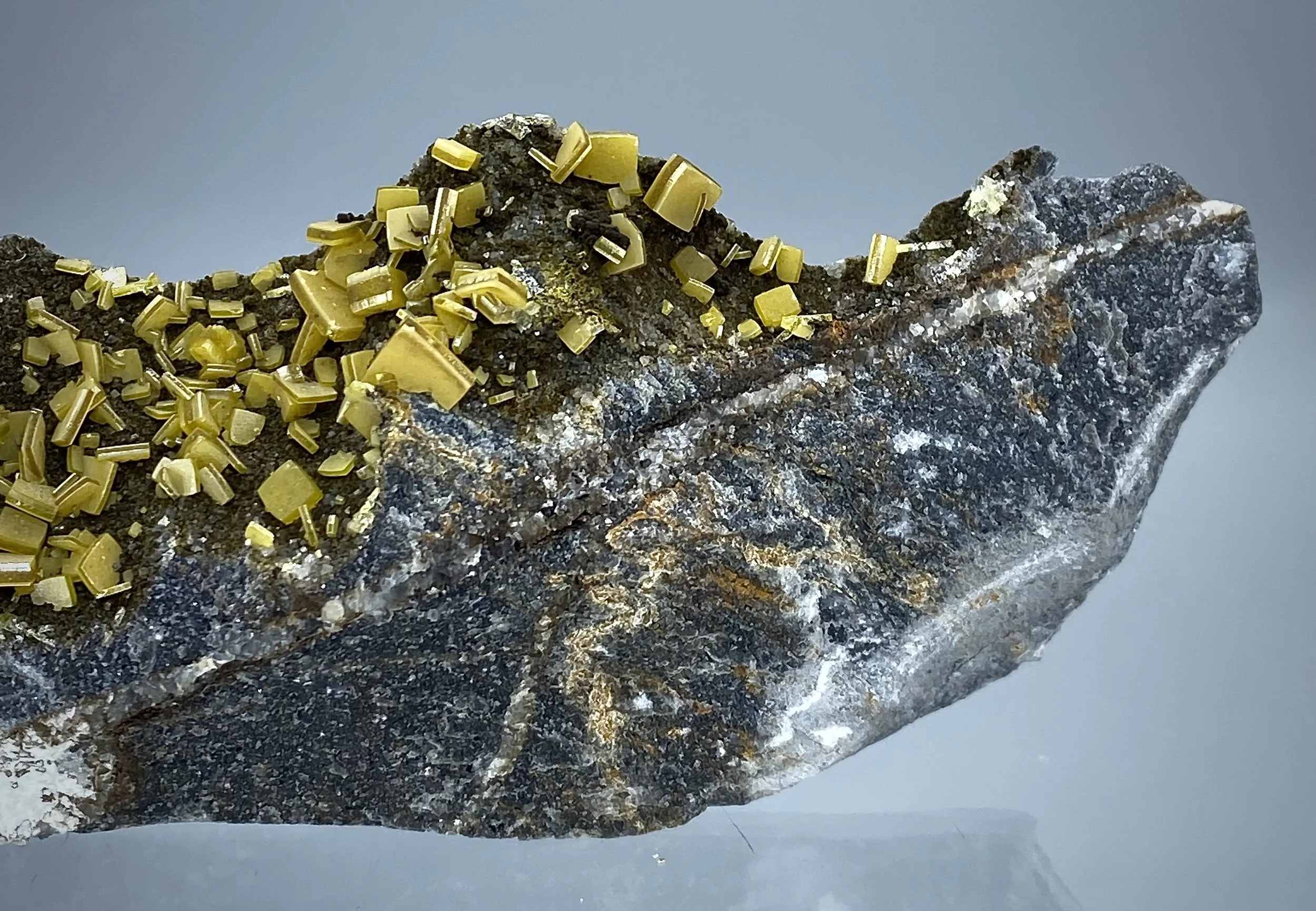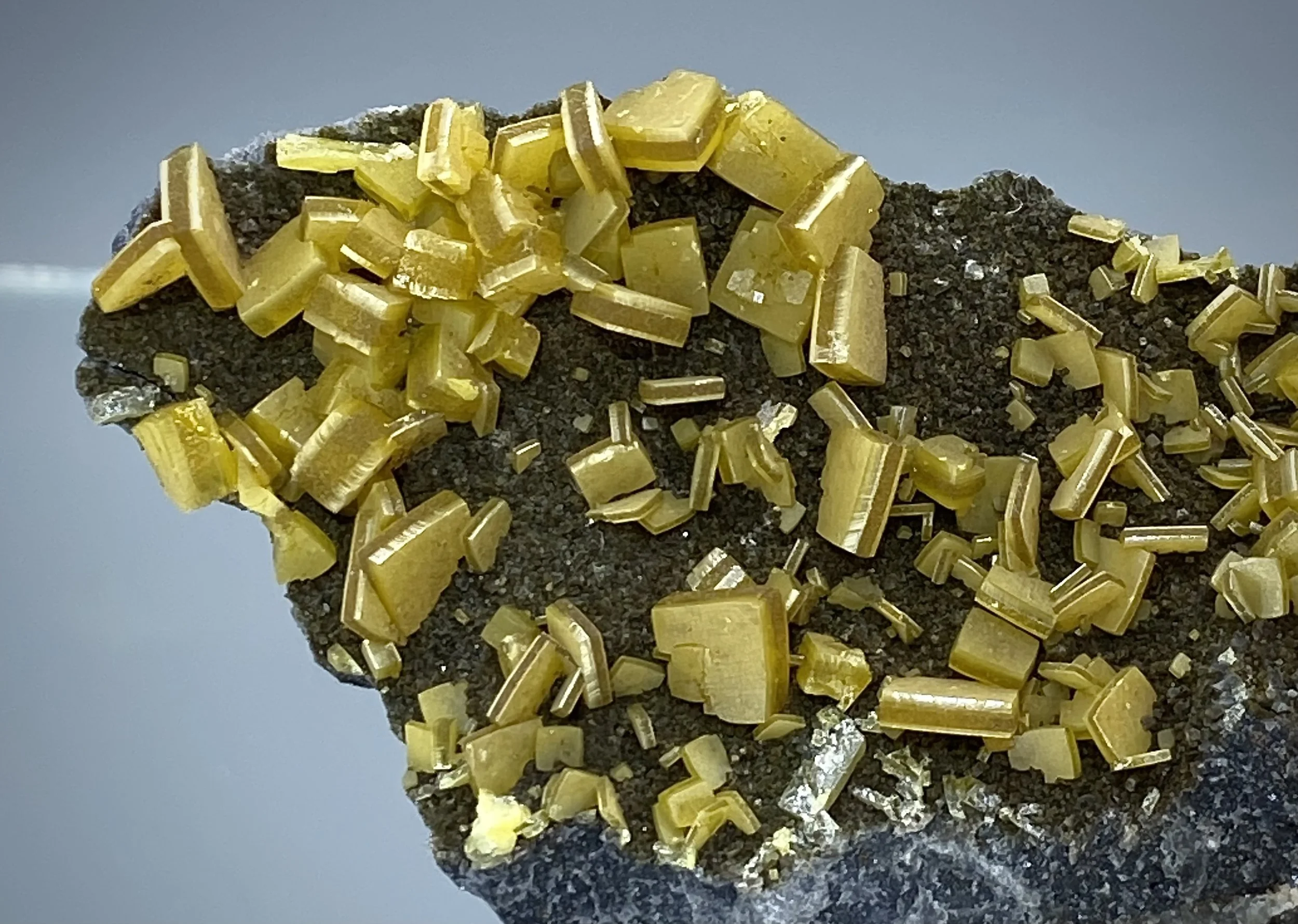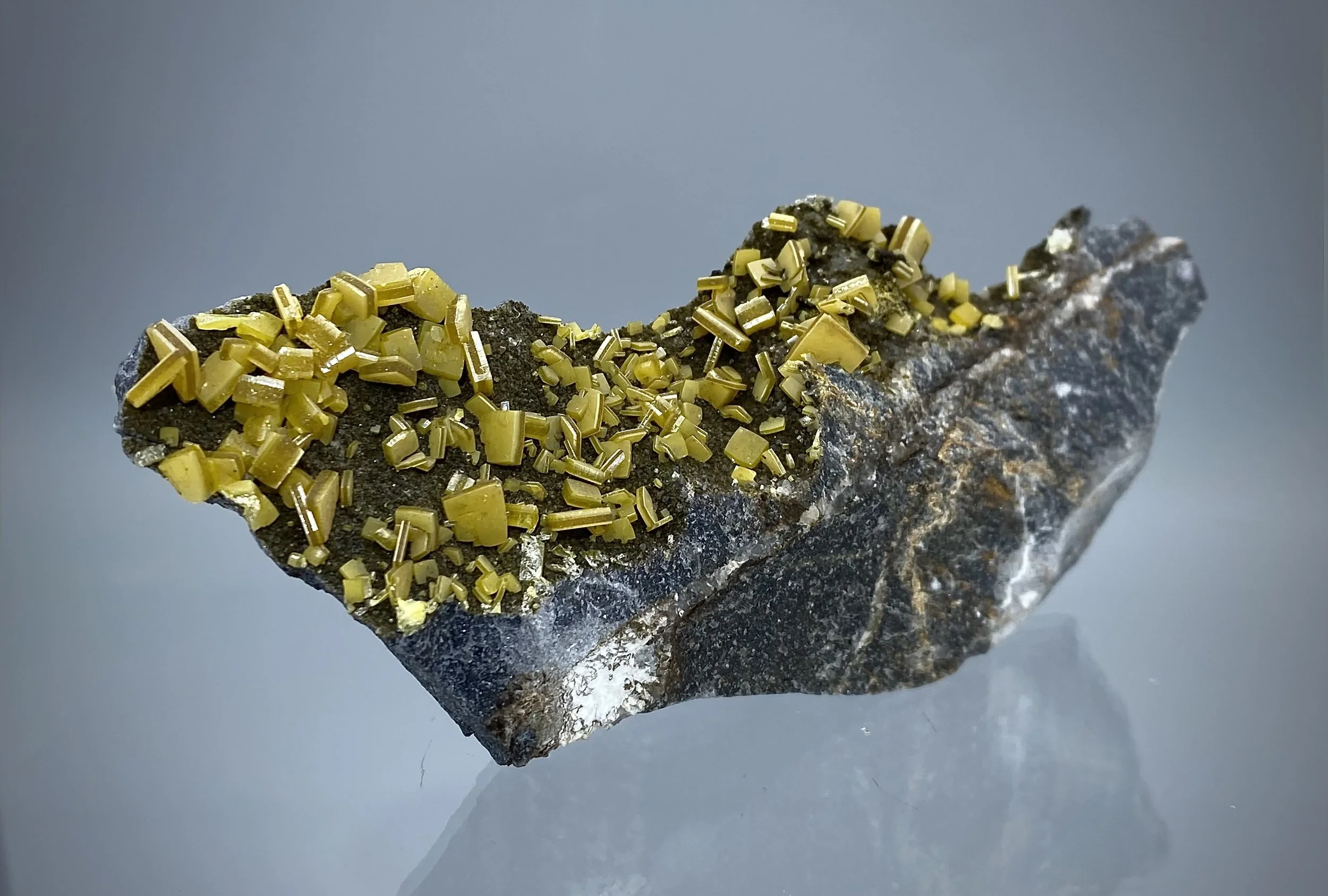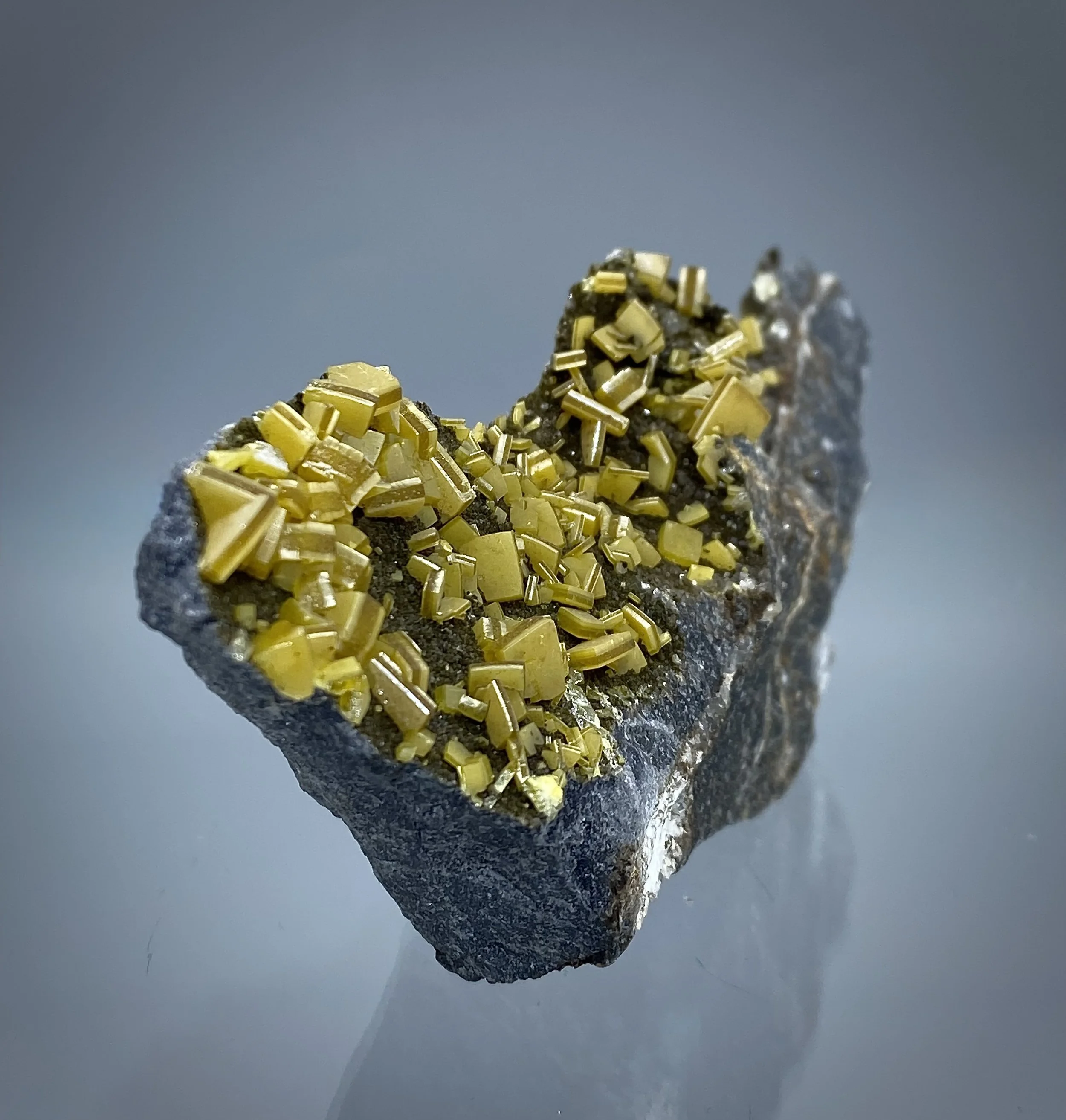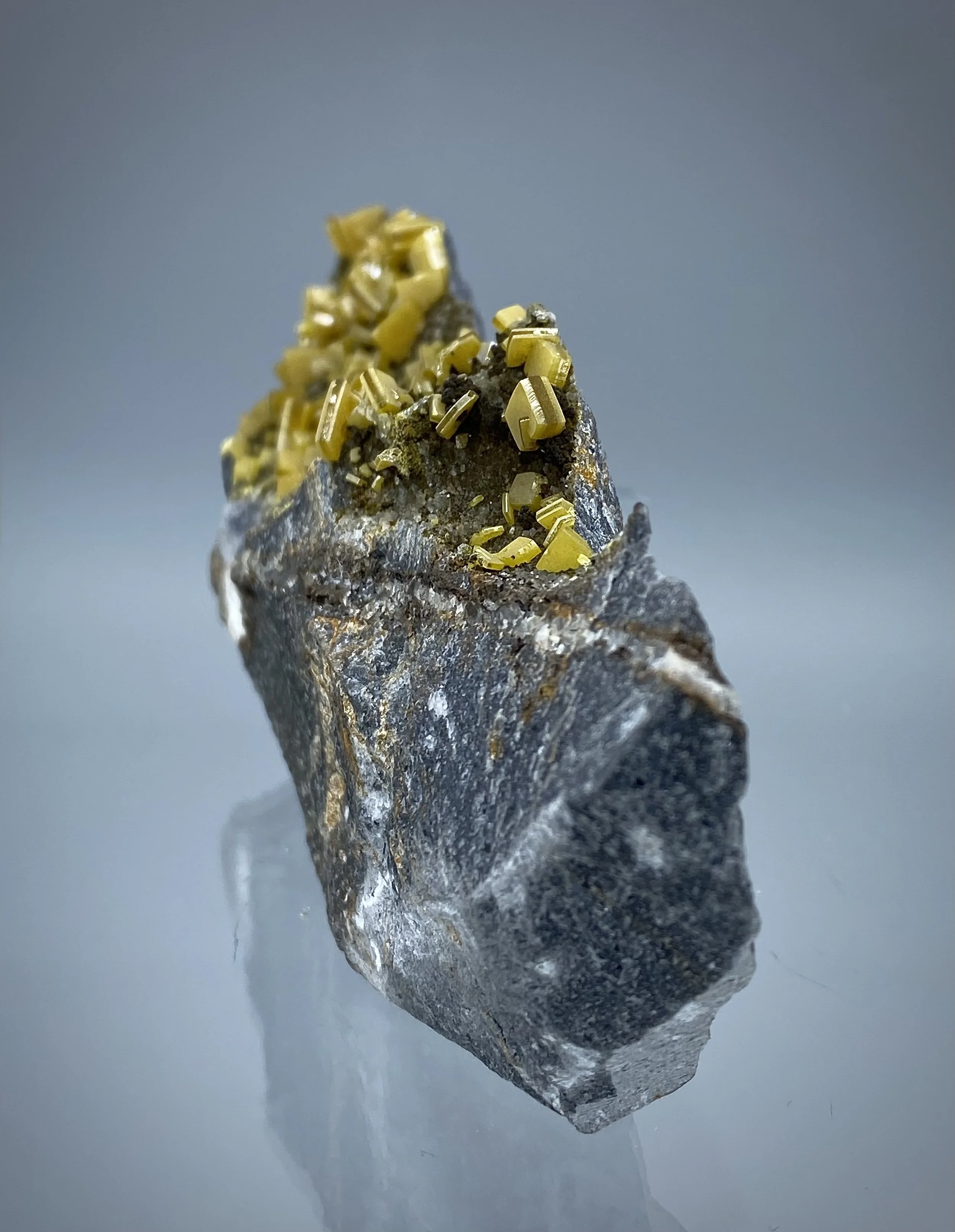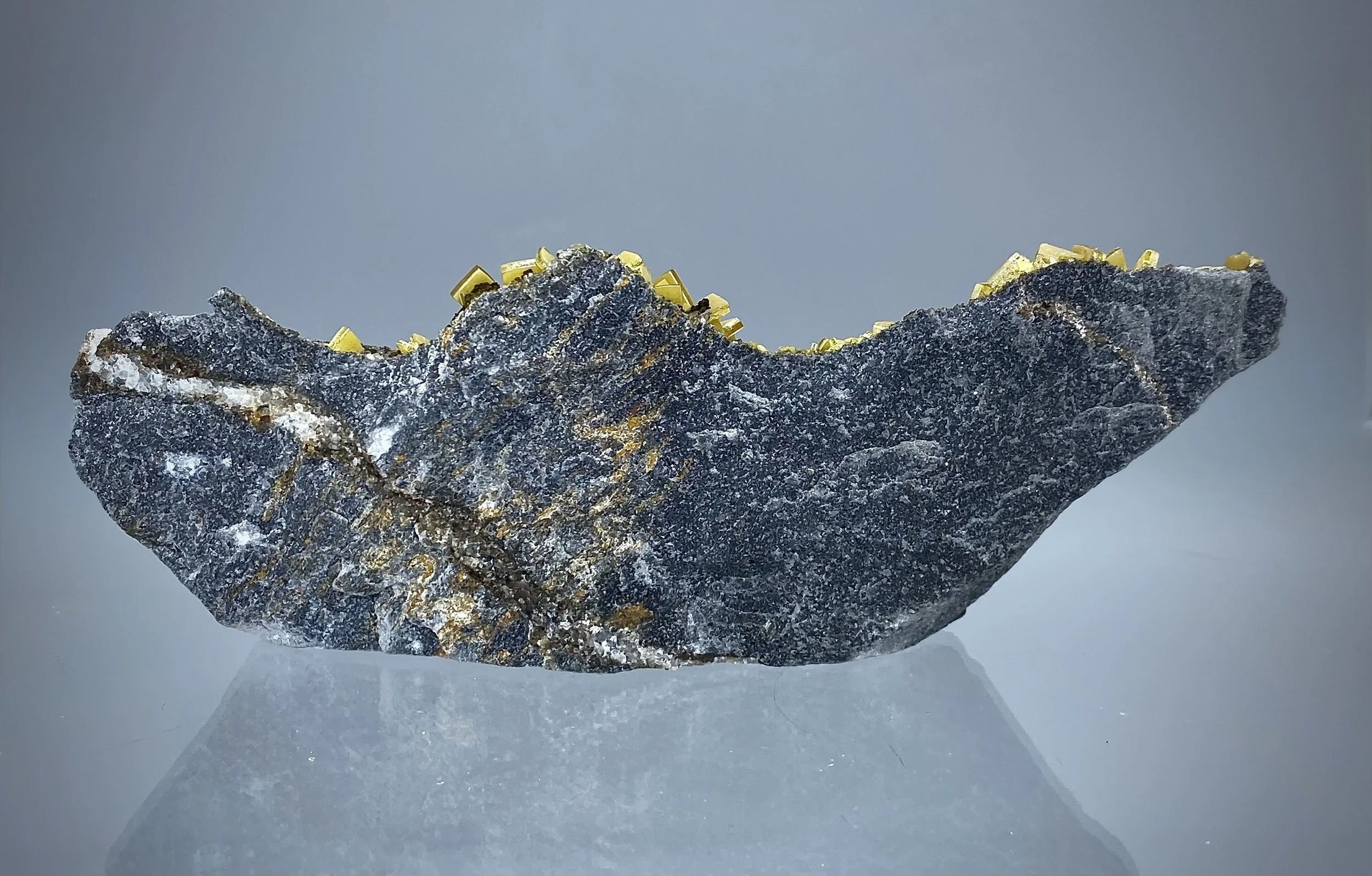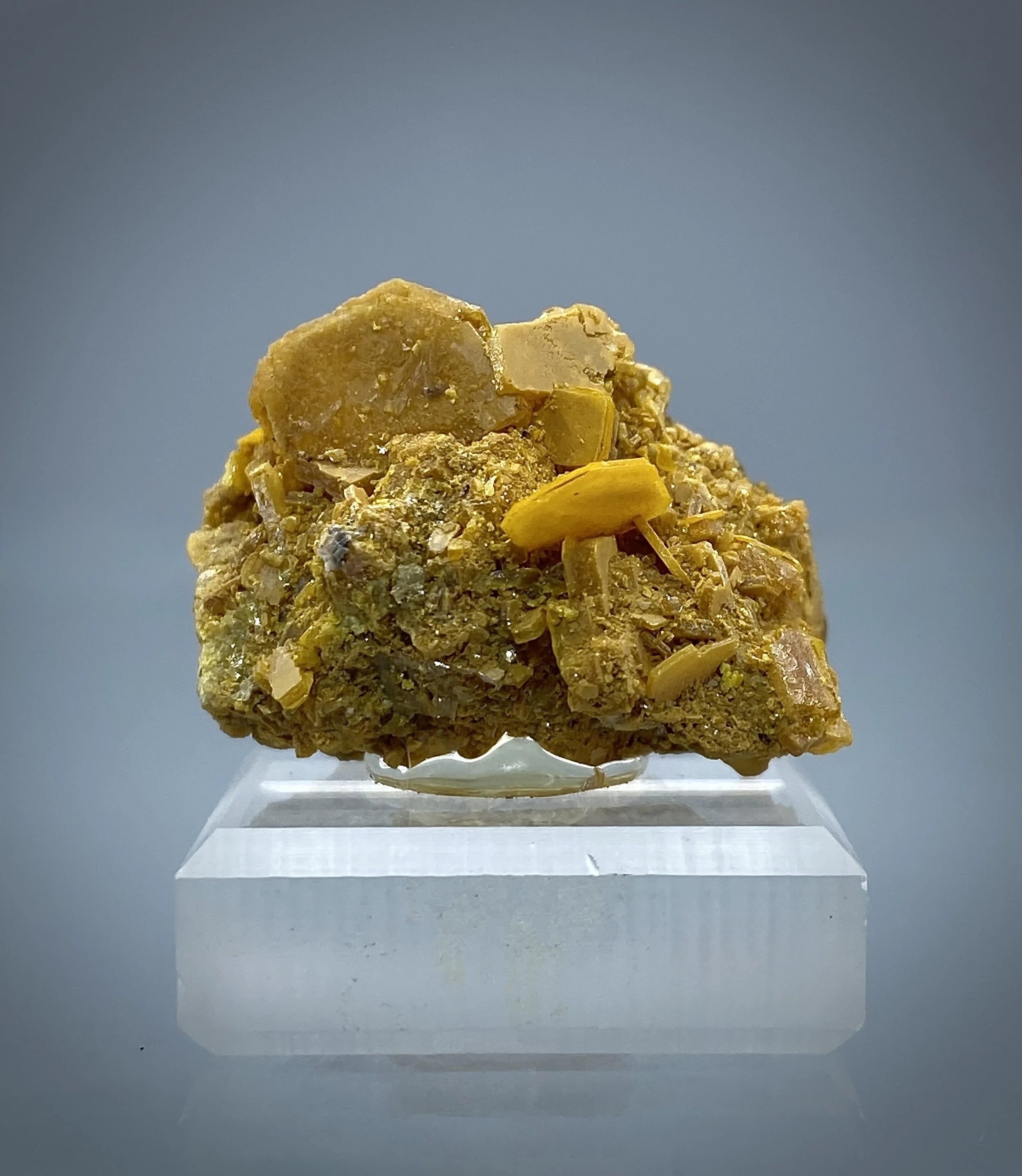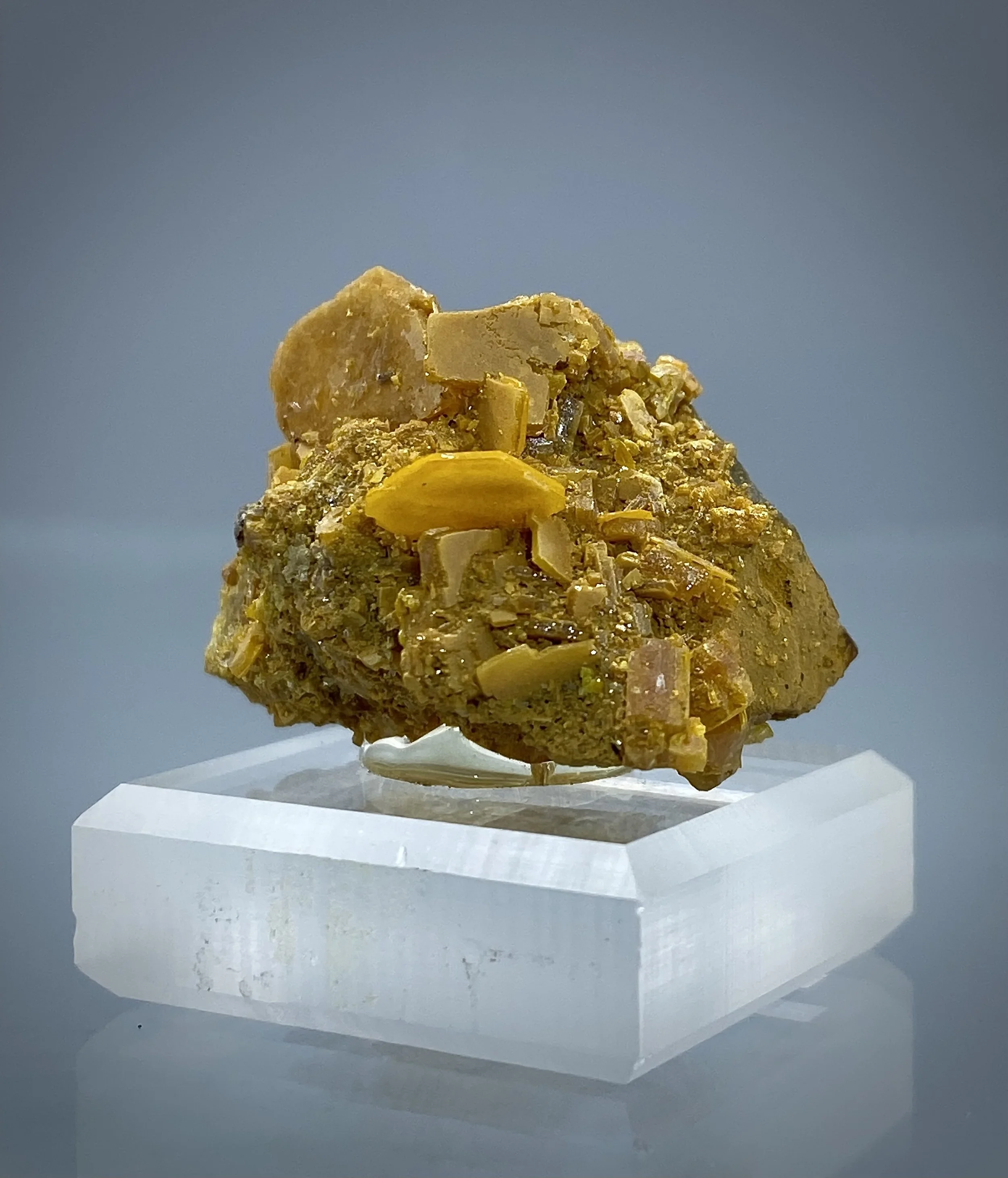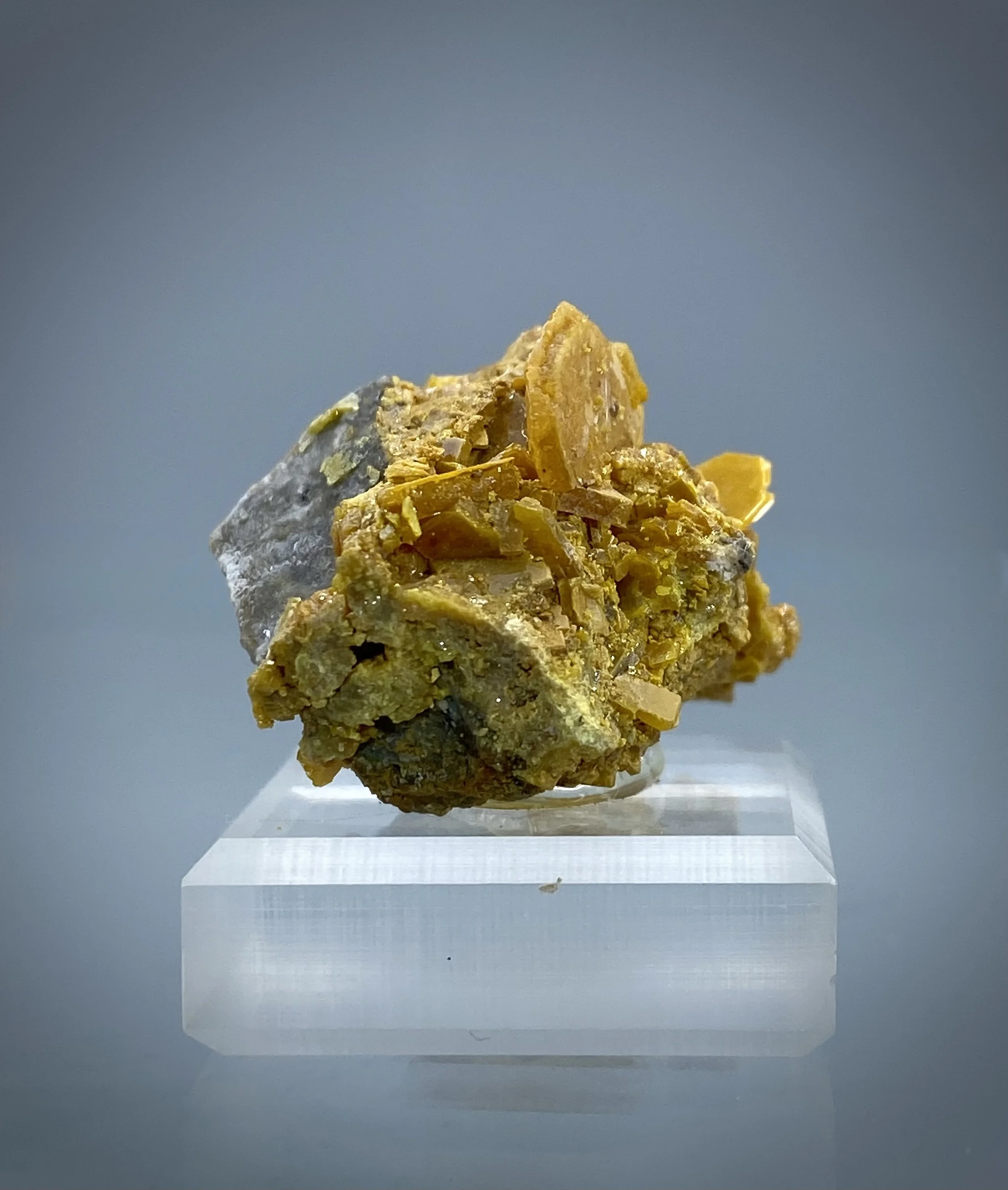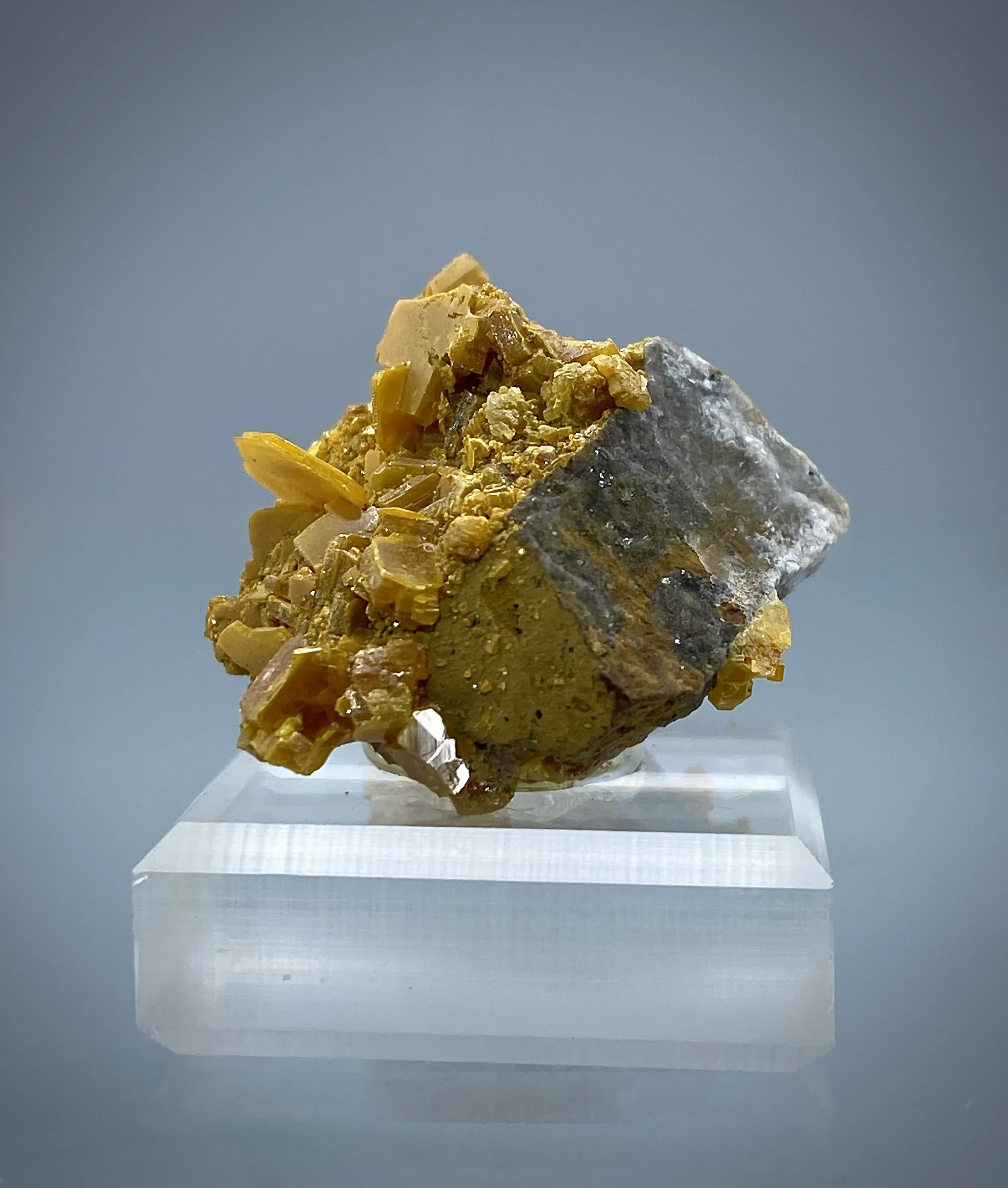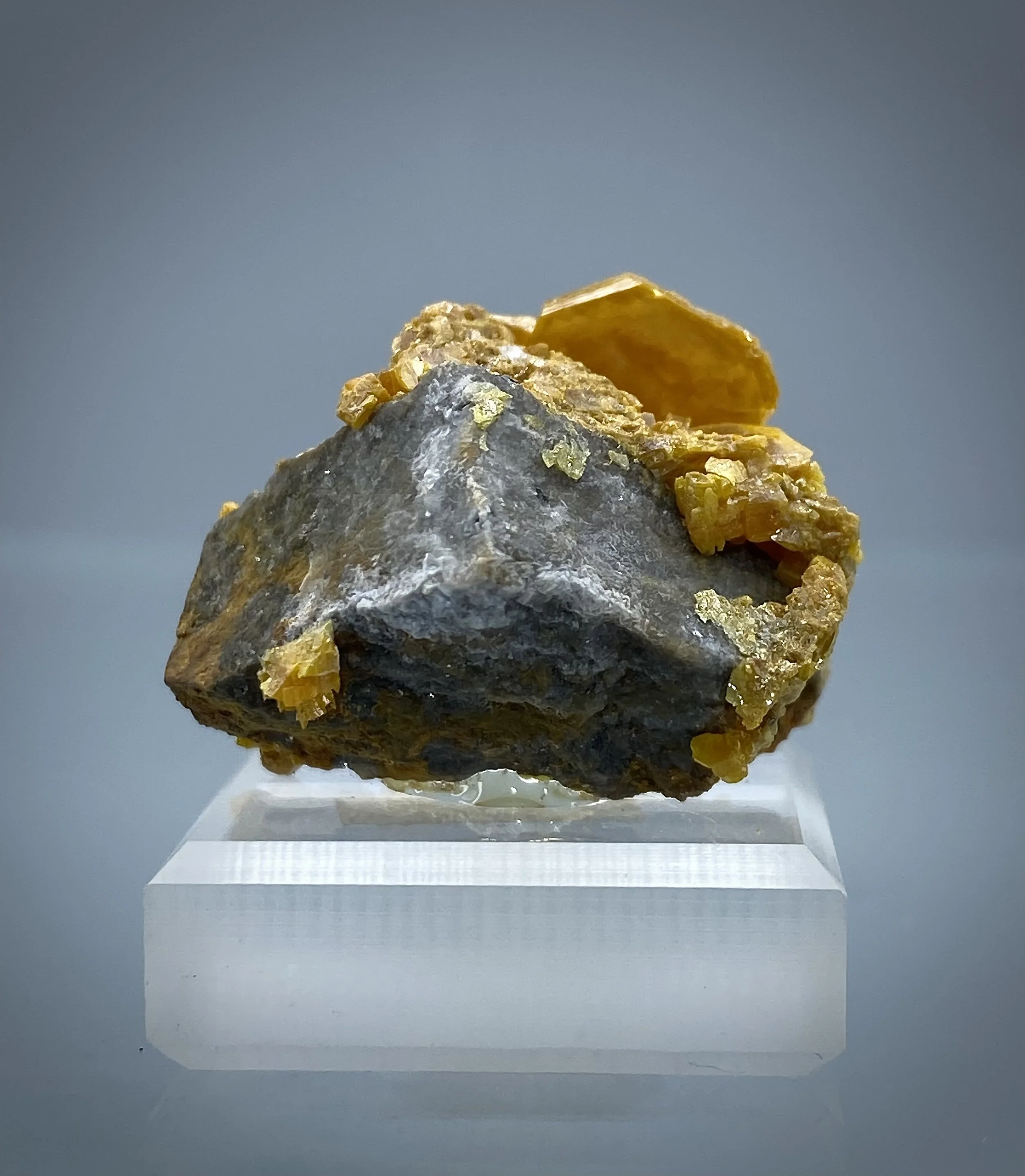Description:
Heavily coated by a deep orange Mimetite, this specimen is a brilliant display of color and texture. Although some of the Wulfenite blades became damaged during extraction, the remaining blades are lustrous and exquisite.
Name:
Wulfenite was first described in 1845 for an occurrence in Bad Bleiberg, Carinthia, Austria. It was named for Franz Xavier von Wulfen (1728–1805), an Austrian mineralogist.
Mimetite was named in 1835 by François Sulpice Beudant from the Greek μϊμητής for "imitator," in allusion to its resemblance to pyromorphite.
Properties:
Wulfenite is a lead molybdate mineral with the formula PbMoO4. It can be most often found as thin tabular crystals with a bright orange-red to yellow-orange color, sometimes brown, although the color can be highly variable. In its yellow form it is sometimes called "yellow lead ore".
It crystallizes in the tetragonal system, often occurring as stubby, pyramidal or tabular crystals. It also occurs as earthy, granular masses. It is found in many localities, associated with lead ores as a secondary mineral associated with the oxidized zone of lead deposits. It is also a secondary ore of molybdenum, and is sought by collectors.
Mimetite is a secondary mineral found in the oxidized zones of lead deposits, with the formula Pb5(AsO4)3Cl. Usually found as small hexagonal prisms, often plain but may be modified, sprinkled on the matrix thinly to thickly. Its colour is quite variable, ranging from pale yellow to yellowish-brown to orange-yellow to orange-red, brownish, greenish, white and colorless.

